Maximum Value
Livestock auction experts offer insight on boosting payouts come sale day.
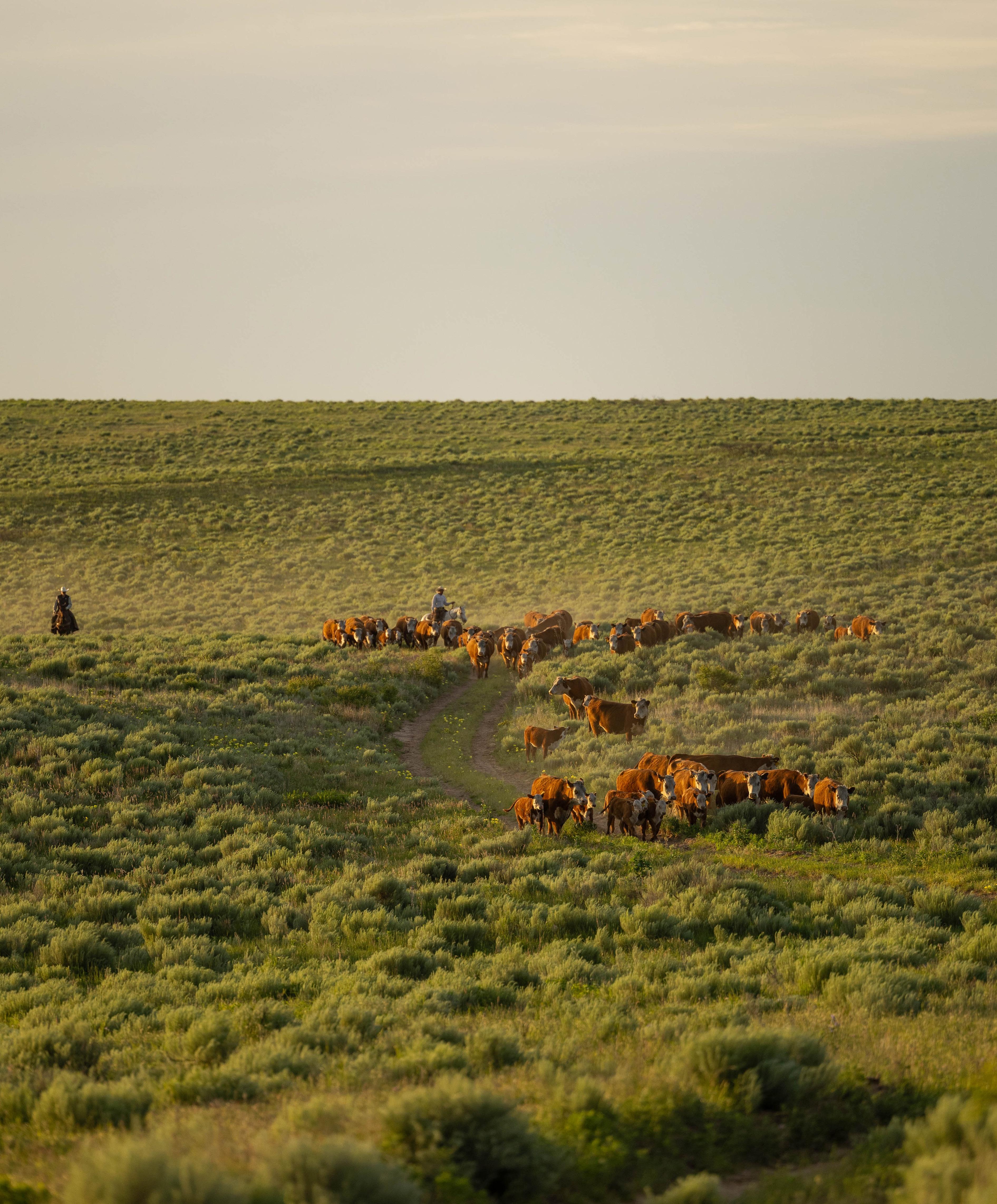

Livestock auction experts offer insight on boosting payouts come sale day.

A recap of the 89th Texas Legislative Session.



Birdwell Plainview, TX (806) 681-3667
Griffin Atoka, OK (580) 271-1333
Johnson Dallas, TX (214) 384-2653
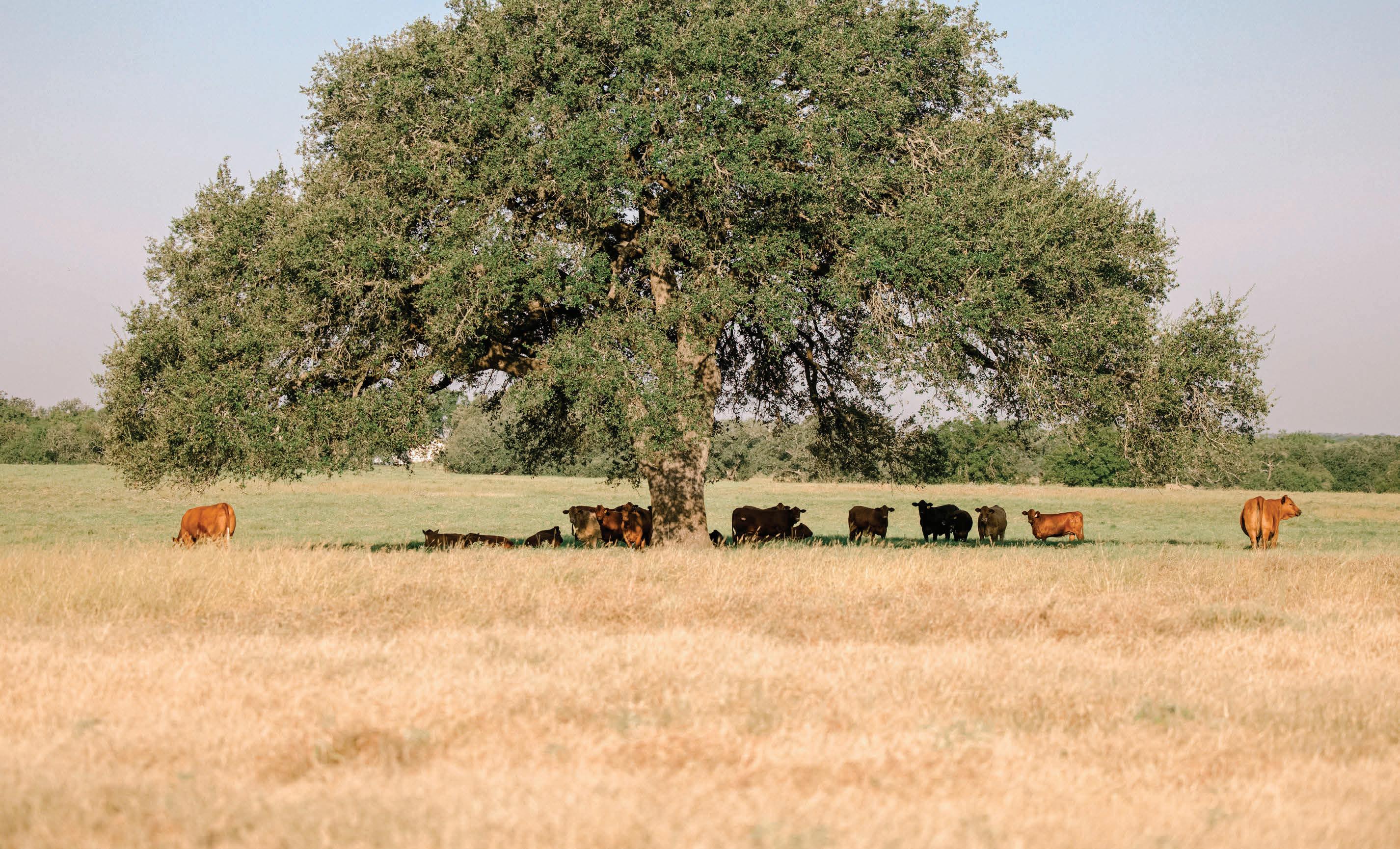
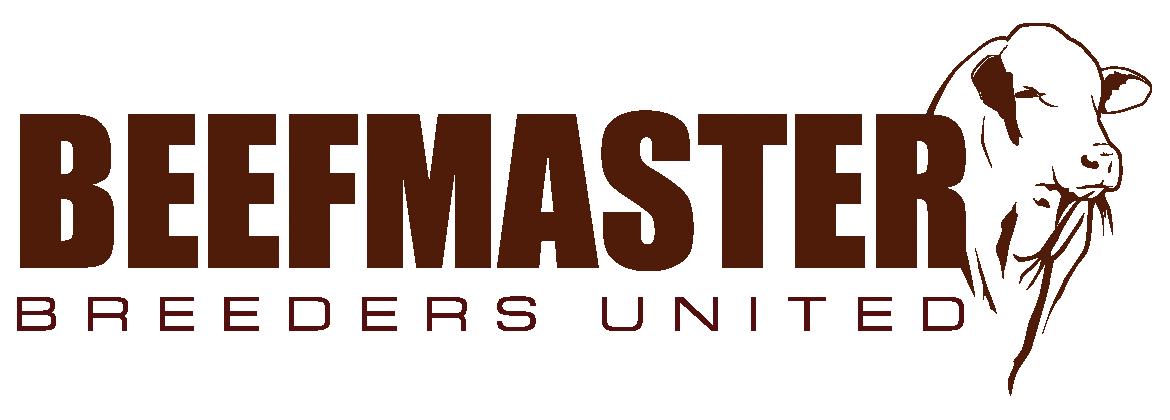

Weaning strategies to reduce stress and improve calf performance.
By Jena McRell
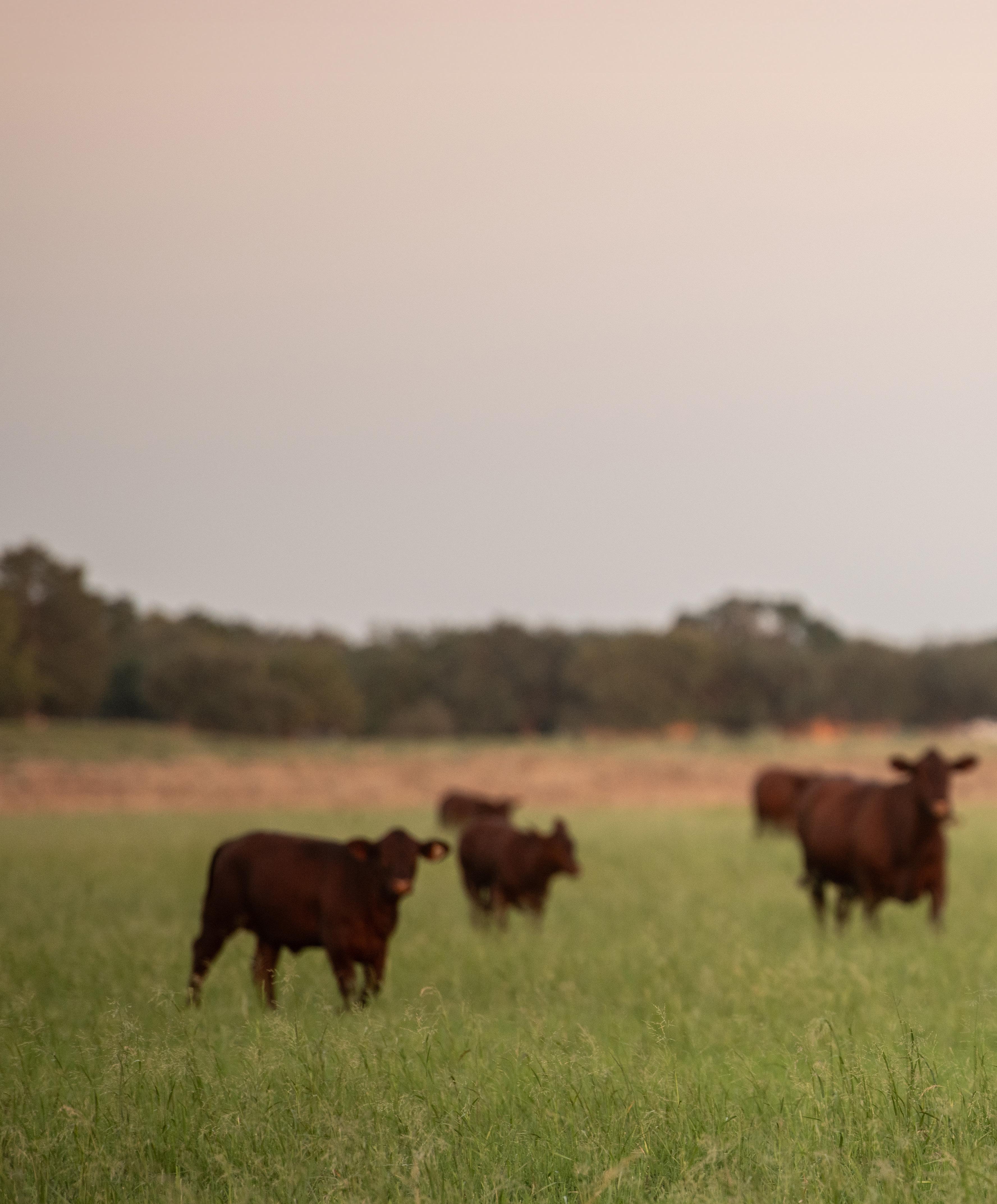
Livestock market experts explain how to capture maximum value for cattle today.
By Kayla Jennings
TSCRA’s presence in Austin drives rural victories during the 89th Legislative Session.
By Paige Holbrooks
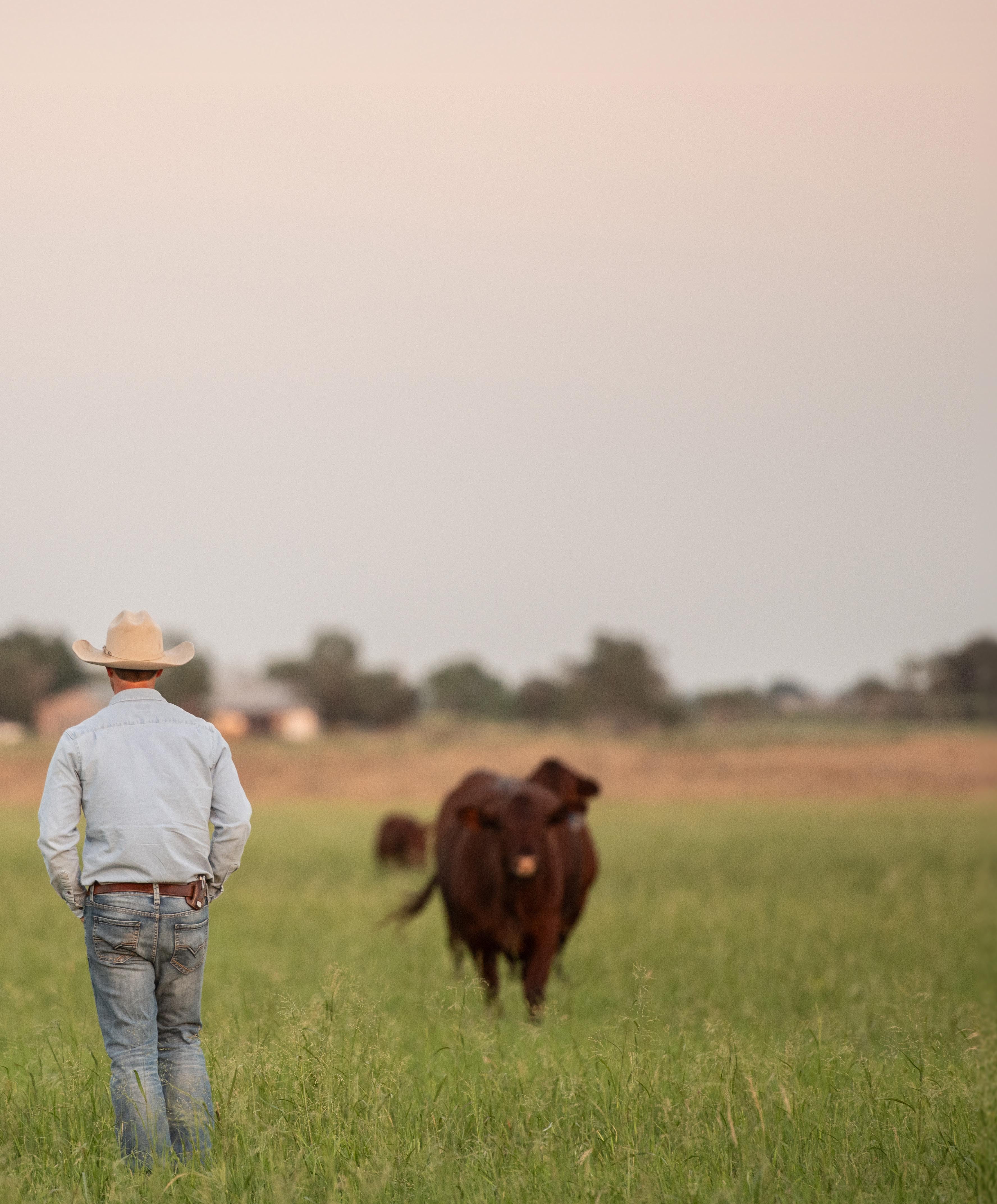
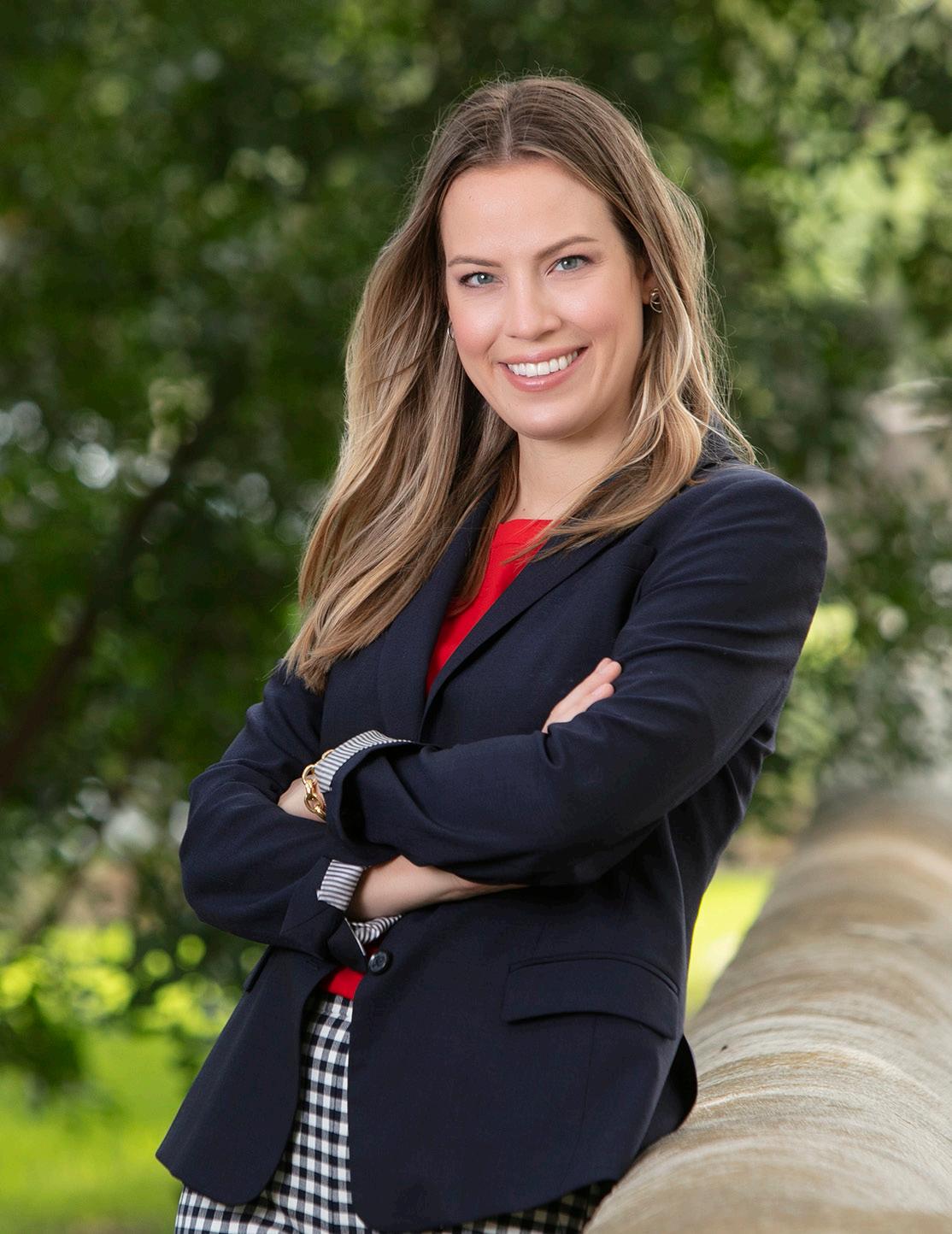
It often feels like there is never enough time in the day. That’s why making decisions that deliver the greatest impact is key to how we spend our time and invest our resources as cattle raisers.
In this month’s issue, we dig into practical and resource-smart management strategies to help you make the most of both.
Low-stress weaning techniques not only benefit your herd, but also your bottom line. According to Roy Baring, a Bexar County cattle raiser, methods like fenceline weaning have contributed 20 pounds or more to a calf’s weight on his operation. This is an investment that pays off, and one I suspect our readers will be eager to explore.
Marketing is another area where timing and strategy can yield returns. We’re recapping one of our most popular School for Successful Ranching sessions from the 2025 Cattle Raisers Convention & Expo, discussing how to best align marketing decisions with your individual herd.
We’re also bringing you a look back at the 89th Texas Legislative Session, revisiting the legislation included in earlier magazine issues throughout this year. We unpack what those results mean for the state’s cattle raisers and landowners.
As a reminder, our ranch gathering season is in full swing. Find a local gathering near you on page 17. We look forward to seeing you. T C

Jaclyn Roberts Parrish Executive Director of Communications, Marketing
& Partnerships/Editor-in-Chief, The Cattleman jaclyn@tscra.org • 817-916-1794
CORRECTION: In our June feature story titled The Road Ahead, we regretfully published incorrect measurements relative to unit of weight on a selection of market prices. The correct figures are as follows: CattleFax CEO Randy Blach said in July 2020 fed cattle sold for 95 cents per pound. In early April, those same cattle sold from $2.05 to $2.10. The feeder cattle market jumped from $1.50 to $3 per pound and the calf market increased from a $1.60 to $4 during the same time period.

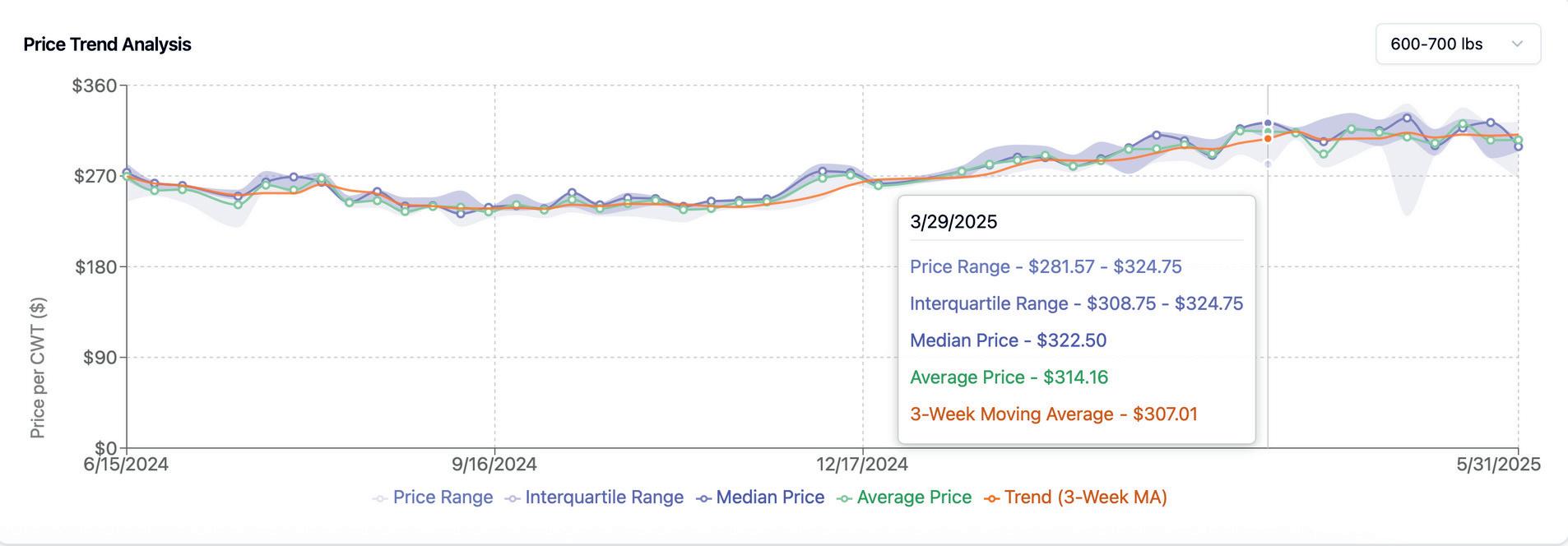
With Cattle Quest, you can quickly locate all stockyards within your selected range, compare commission rates, and evaluate market quality across multiple locations. Access 12 months of historical market trends, view real-time and historical volatility by weight range, and gain the insights you need to maximize every sale.

Cattle Quest was developed to equip producers with the critical information needed to maximize profitability, minimize input costs, and mitigate risk.

August 2025 / / Vol. CXII, No. 3
Published by Texas & Southwestern Cattle Raisers Association
P.O. Box 101988, Fort Worth, Texas 76185 Phone: 817.332.7064 • Fax: 817.394.1864 tscra.org
EDITORIAL
Editor-in-Chief Jaclyn Roberts Parrish
Managing Editor Jena McRell
Associate Editor
Shelby Kirton
Copy Editors Kayla Jennings, Elyssa Foshee Sanders
GRAPHIC DESIGN & PRODUCTION
Manager Heather Heater
Intern Alivia Knoerzer
ADVERTISING
Director of Corporate Relations & Sponsorships Kyle Conway
EXECUTIVE DIRECTORS
Executive Vice President/CEO Jason Skaggs
Communications, Marketing & Partnerships Jaclyn Roberts Parrish
Events, Education & Leadership Development Emily Lochner
Finance & Human Resources Megan Wills
Government Relations Melissa Hamilton
Insurance Services Michele Woodham
Interim Law Enforcement, Brand & Inspection Services Clay McKinney
Membership & Operations Lisa Walker
OFFICE LOCATIONS
Fort Worth 2813 S. Hulen St., Suite 150 Fort Worth, Texas 76109
Austin 919 Congress Ave., Suite 750 Austin, Texas 78701
Subscription Inquiries: tscra@tscra.org or 800-242-7820
Advertising Sales: sales@tscra.org or 817-332-7064
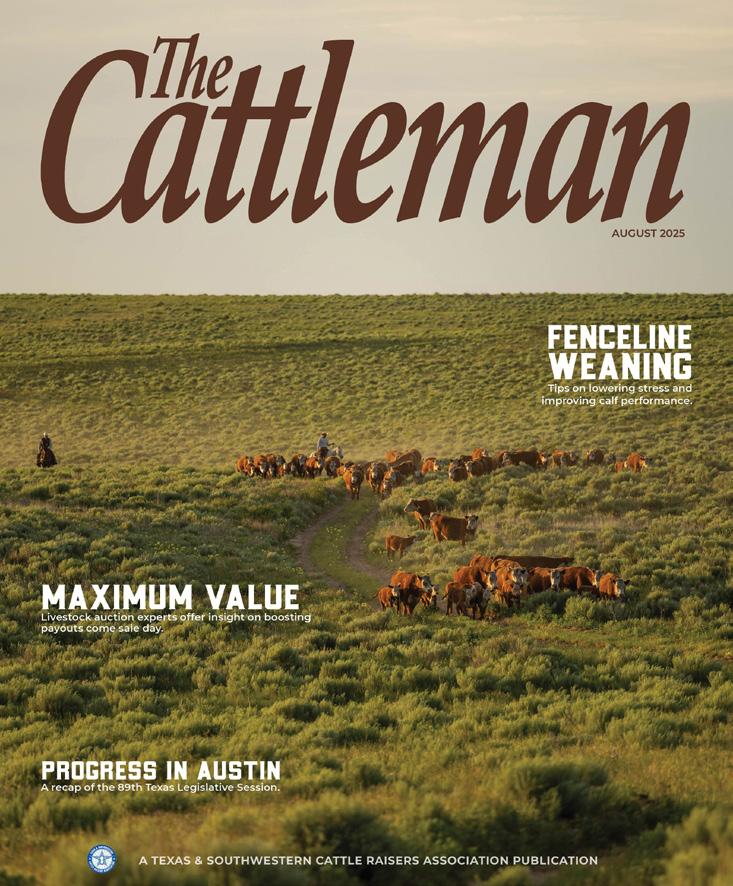
A golden-hour cattle drive at Indian Mound Ranch, Texas & Southwestern Cattle Raisers Association members near Canadian.
Photo by Emma Taber Miller
Soaking in the late-summer days checking the herd.
Photo by Kayla Jennings
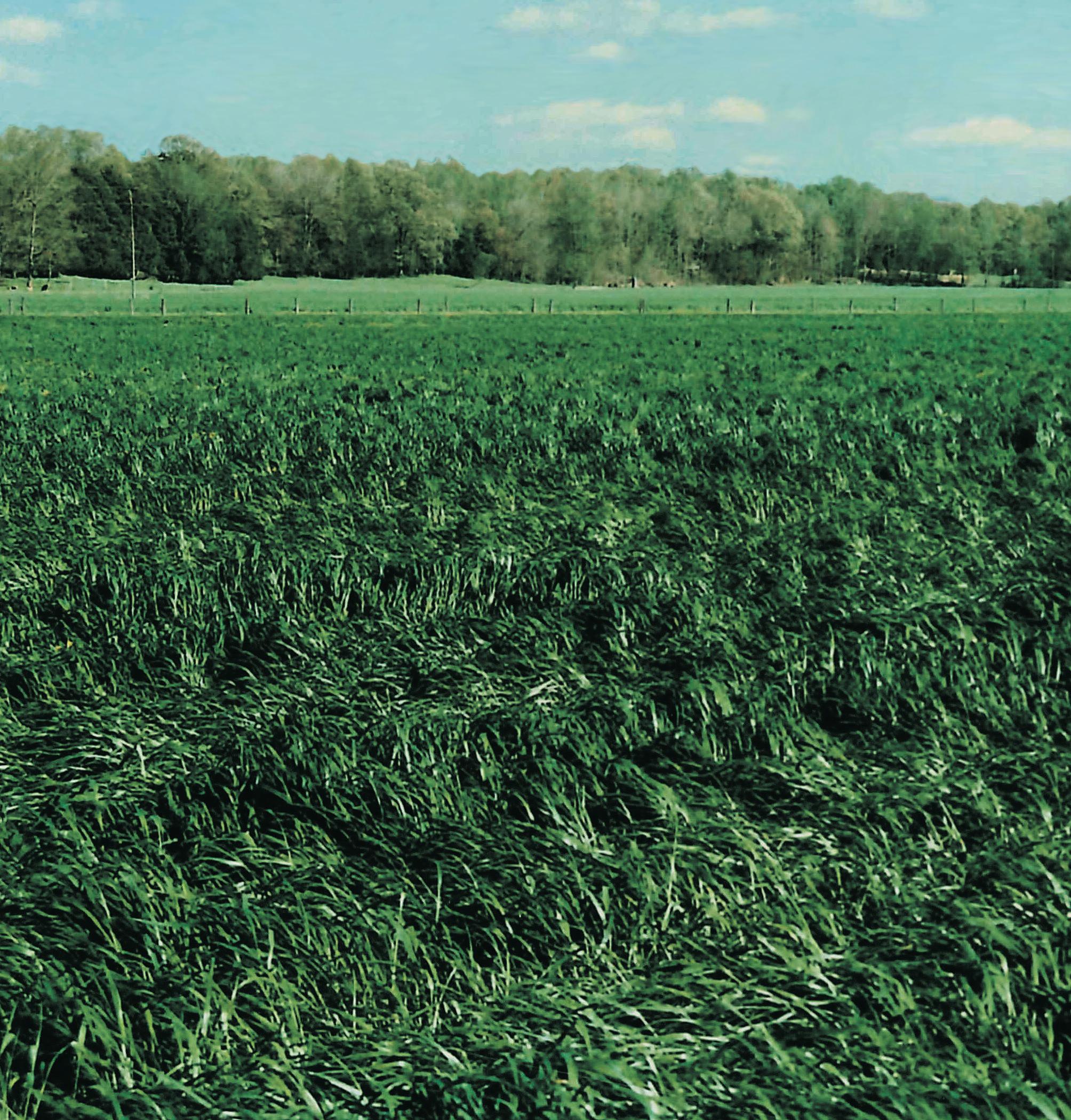
“ WAX Genuine Marshall ryegrass is my choice of ryegrass … been planting ryegrass for more than 20 years for grazing and hay. Majority of the time I have used WAX Marshall, but also try some of the new ryegrasses to see how they compare to my standard… WAX Marshall… I am still a WAX Marshall ryegrass man!
I have tried the “Generic Marshall” from my local co-op. In short, it did not come close to production or have the carrying capacity like WAX Marshall… it looked more like Gulf… it did not have the vigor and fast recovery like WAX Marshall.
Every year is different and full of unexpected surprises, but from all my years with WAX Marshall, I feel confident in the outcome. The “Generic” just did not produce. Planting 700 acres of ryegrass, I do not need any surprises for myself or my cattle.
There has only been one consistent ryegrass for me for over 20 years… WAX Marshall ryegrass.
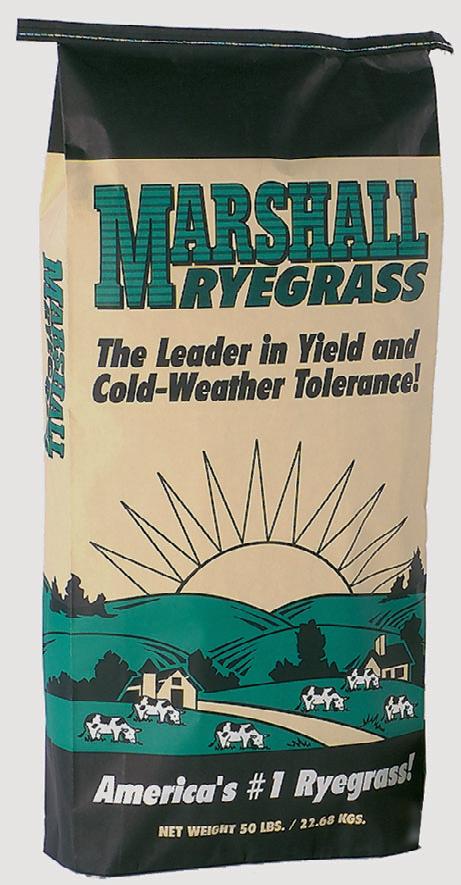
If you want real Marshall ryegrass, make sure you ask for WAX Genuine Marshall… I do! ”


By Jena McRell
About a decade ago, Roy Baring was preparing to wean a set of calves and thought to himself, “There must be a better way.”
He’d grown tired of calves bawling, cows pacing or tearing down fences and the amount of time required for cattle to settle back into healthy patterns following the first-time separation. It was a stressful time for all involved.
Baring and his family have owned and operated Baring Cattle Company in Bexar County all his life, about 75 years.
Today, they focus on raising elite show steers from their herds of Simbrah, Simmental and Brahman cattle. Located less than 20 miles from downtown San Antonio, the family has been involved in the city’s annual stock show and rodeo for many years.
“We have calves born from September to February for the different shows and things,” Baring says. “So, we are constantly weaning cattle.”
After talking over his weaning approach with a friend years ago, they decided that rather than a cold-turkey approach, he should try keeping the cows right across the fence from the calves for a few days. Baring says fenceline weaning wasn’t a term he was familiar with at the time, but that was the strategy he followed — and it worked.
“It’s worked better for us,” he says. “It is a lot easier on everything. You do not lose so much time with the calves. They do not go so far backwards.”
Sam Womble, a Texas A&M AgriLife Extension agent in Bexar County, says the No. 1 goal during weaning is to make the transition as stress-free as possible for the cow and calf. Not only is it better for the animals, but it also improves the operation’s bottom line.
“We don’t want to leave money on the table because we’re not thinking through the weaning process,” Womble says. “I want to sell as many pounds of a calf as I can.”

by
The weaning period is a critical stage in a beef calf’s life and, if handled with care, can set the animal up to fully maximize its genetic potential.
This means taking a thoughtful approach to how, when and where calves are separated from their dams.

“If we have a weaning approach, like fenceline weaning, we can acclimate those calves and really help the health of those cattle moving forward down the chain,” Womble says.
As the name implies, fenceline weaning places calves and cows in close proximity so they can see, hear and smell each other throughout the transition process.
Gradual separation allows the cattle more time to adjust without changing too many variables at once. High-stress situations like weaning have the potential to greatly impact a calf’s immune system, weight gain and future performance potential.
“If they are not weaned properly, we see increased incidences of respiratory illness and then you’ve got shrink and a whole combination of other things to deal with,” Womble says.
Come sale day, he says data has shown that calves can experience weight loss, or shrink, up to 15%.
“If you take a 500-weight calf and put them in a trailer and haul them to town, the reality is you’re probably not going to be getting paid for much more than 450 pounds,” he explains.
Alternatively, research into the effectiveness of fenceline weaning at the University of California reported that calves experienced a 95% improvement in weight gain after the first two weeks of weaning when compared to contemporaries that were completely separated from their mothers. This advantage also continued 10 weeks postweaning.
Baring says he has seen that trend play out on their ranch, too. “We have probably seen a 20-to-30-pound difference on the calves,” he says. “The calves settle down, they don’t lose so much weight, and we don’t have many sick calves.”
By those numbers, practicing a fenceline weaning approach could generate an additional $100 per head in today’s cattle market.
“Cattle prices are really good — and have been for a while,” Womble says. “It behooves folks to figure out what they can do to be as efficient as possible, be a good steward of the resources and animal husbandry in general.”

“The
Thursday, OCTOBER 2, 2025 Comanche, TX
125 Two-Year-Old Bulls
Bred, Developed and Pasture Raised by Dudley Bros. in North Central Texas. Bulls are adaptable to climate and forage conditions East, West, North and South!
• Good body condition, not too fat and ready for service!
• Well-muscled with good feet and legs!
• Excellent balanced EPDs!
• Large percentage well pigmented!





At Baring Cattle Company, the weaning process for show calves begins at around four months old.
Their first step is transferring the cow-calf pairs into a large working pen, about three quarters of an acre, which is where the calves will remain after the dams are moved.
Allowing calves to explore the space, locate water sources and adjust to feed alongside their mothers helps eliminate stress and ensures they are familiar with their new environment.
Womble also emphasizes the importance of this step. “There really is value in moving the cows and calves into the pasture in advance to familiarize them with the surroundings before the calves are actually weaned.”
After about 5-6 days, the mother cows are moved to a trap that sits right next to the working pen. “That is when the weaning period starts,” Baring says. “We usually hold them there for 10 days, and it works real well for us.”
The fenceline weaning approach allows the cows and calves to see and smell each other, as well as make noseto-nose contact through the fence.
While the first couple of days can be met with bawling and pacing on both sides, Baring says cattle typically settle well into their new routines. They also monitor them closely, and if one animal seems to be having a difficult time, they can adjust.
“Initially, I’d say you will see a pretty big change in probably three or four days after you wean them across the fence,” Womble says. For cow-calf producers aiming to sell their calves at a livestock auction, the Extension agent recommends a one-week window as a rule of thumb for the weaning process.
Once the separation process is complete, the weaned calves at Baring Cattle Company transfer to an eightacre trap for the next growth phase. The cows are moved back to pasture to prepare for the next breeding season.

Fenceline weaning offers a lower-stress, higher-success approach to separating calves from cows. The following steps outline ways to maximize health, weight gain and cow fertility.
Pre-Weaning (3 weeks or more prior)
Vaccinate, castrate and dehorn well before weaning.
Start creep feeding calves in pasture to ease the nutritional shift.
Body condition score cows to assess their readiness and plan weaning timing.
Familiarization Period (4-5 days)
• Move cows and calves into weaning pen, trap or pasture for 4-5 days before separation.
• Let the calves become familiar with the area, feed bunks and water sources.
Weaning (5-6 days)
• Remove cows to an adjacent pasture or trap across a secure fence.
• Place feed bunks and hay along the shared fenceline to encourage calm behavior.
• Observe closely for signs of stress or illness. Calves should start to eat, rest and settle.
• Keep cows visible and audible for several days. Most calves should calm down and resume feed intake by day four or five.
Post-Weaning
• Move calves to a larger trap or pasture. Continue feeding and monitoring weight and health.
• Keep cows on decent forage or supplement to help recover body condition score.
Monitor cows and calves for signs of illness or stress.


Strong fences, interior or cross fences, are really the key.”
— Sam Womble, Texas A&M AgriLife
When considering a fenceline approach to weaning, Womble says it is important to determine an overall plan based on what is available to the operation. Fences, facilities, forage resources and nutritional needs are all part of the conversation.
“Strong fences, interior or cross fences, are really the key,” Womble says. “I’d probably prefer net wire fences, so the calves can't crawl through or under them perhaps like they could with a barbed wire fence.”
If existing fences need an extra boost, he says one option is to run an electric fence on either side for additional support. However, relying on an electric fence alone likely won’t be enough to keep cattle from getting through.
Whether weaning in a set of pens, trap or another pasture, Womble says there is a lot of flexibility in how the set-up is structured.
“People don't have to have anything fancy,” he says. “It doesn't matter if you've got a small number of cows or a large group — thinking through and understanding the weaning process is what’s important.”
Womble also reminds cattle raisers to avoid doing too much at once when it comes to processing weaned calves. Dehorning, castration and vaccination should all happen weeks before weaning so that the calf can return to its mother.
“I think the whole idea, if we can do this correctly, is just to figure out how we can try to make it easier and minimize the stress versus adding any undue stress to them,” Womble says.
In preparation for weaning, Baring says they also creep feed their calves while still out on pasture with the cows. Being familiar with the feeder helps the calves keep up their growth potential. “Then it's not such a big transition moving from mama to just on the grain,” Baring says.
The veteran rancher also stresses the art of paying attention. Monitoring animal behavior is the best way to determine whether a program is working. “You've got to ease into it and play it by ear,” he says. “You just can't say, ‘Well, alright, next Monday we're going to do this.’ You got to look and see what's happened.”





While it might not be feasible for some herds to practice fenceline weaning all the time, even small changes to weaning practices can have a big impact.
“If they could do nothing else but pull those calves off the cows and give them five or six days before they load, haul and carry them to town, that would be huge,” Womble says.
Calves that have been properly weaned for 45 days — those that are healthy, castrated and dehorned — consistently bring added premiums at auction. With rising input costs, producers are looking for practical strategies that pay off.
“It's not getting any cheaper — a lot of inputs and expenses,” Womble says. “People are trying to spend their dollars wisely on practices that they can get a return on.”
Shrink and diminished weight gain on weaned calves remain major concerns, but Womble and Baring both agree watching the cow is also critical. If a cow is stressed and in a body condition score of four or less, she needs nutritional support to regain condition to breed back successfully.
Whether a producer aims to wean calves at 500 or 700 pounds, cow condition or limited forage might force the decision sooner. “If we don’t do that, then we end up hurting ourselves down the road,” Womble says. “Instead of her having a calf every year, we may have her delivering a calf every 16 to 18 months.”
During a time of tight cattle supplies, record prices and high input costs, every calf — and every pound of calf — counts.
“Strong consideration makes sure we are doing things right, and that from a producer standpoint, those calves can return as much revenue as they can,” Womble says. “With a bit of foresight and planning, that can be accomplished pretty easily.” T C

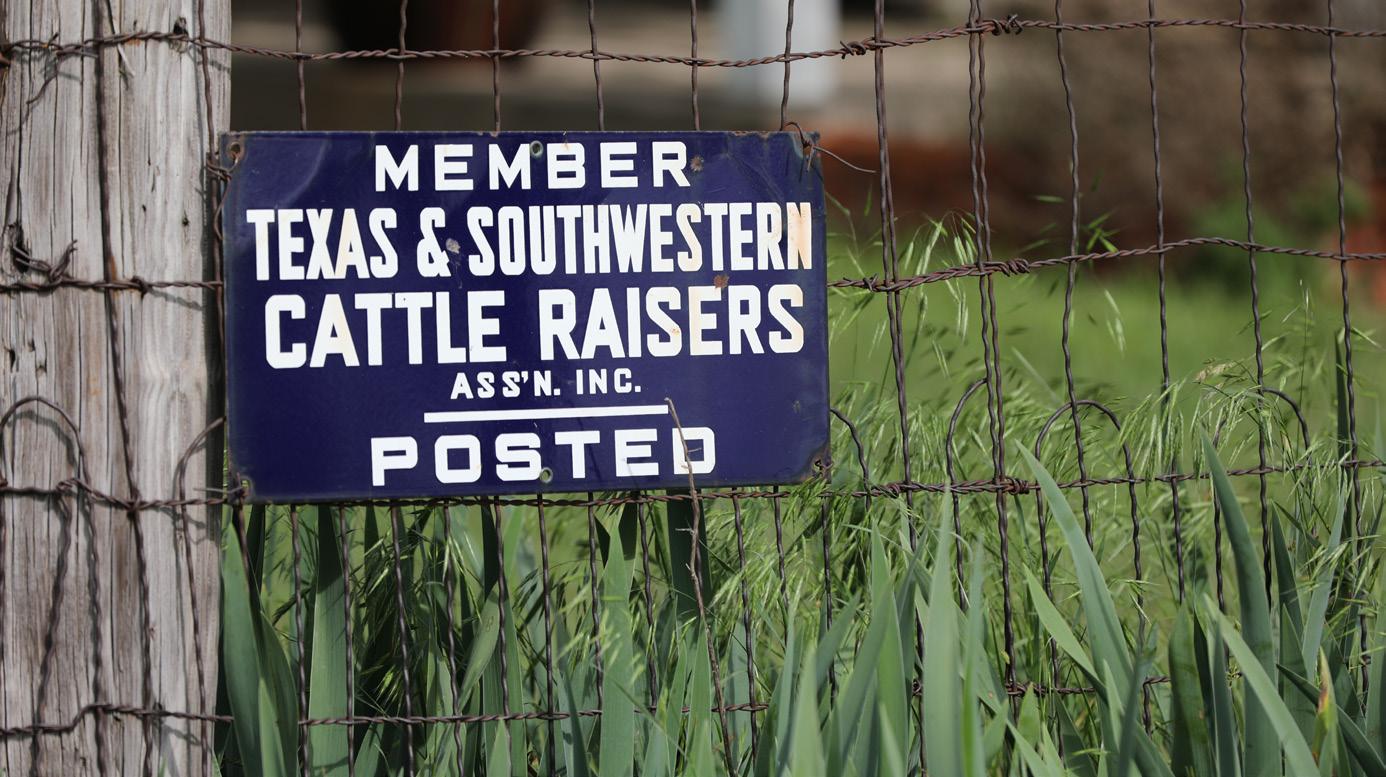
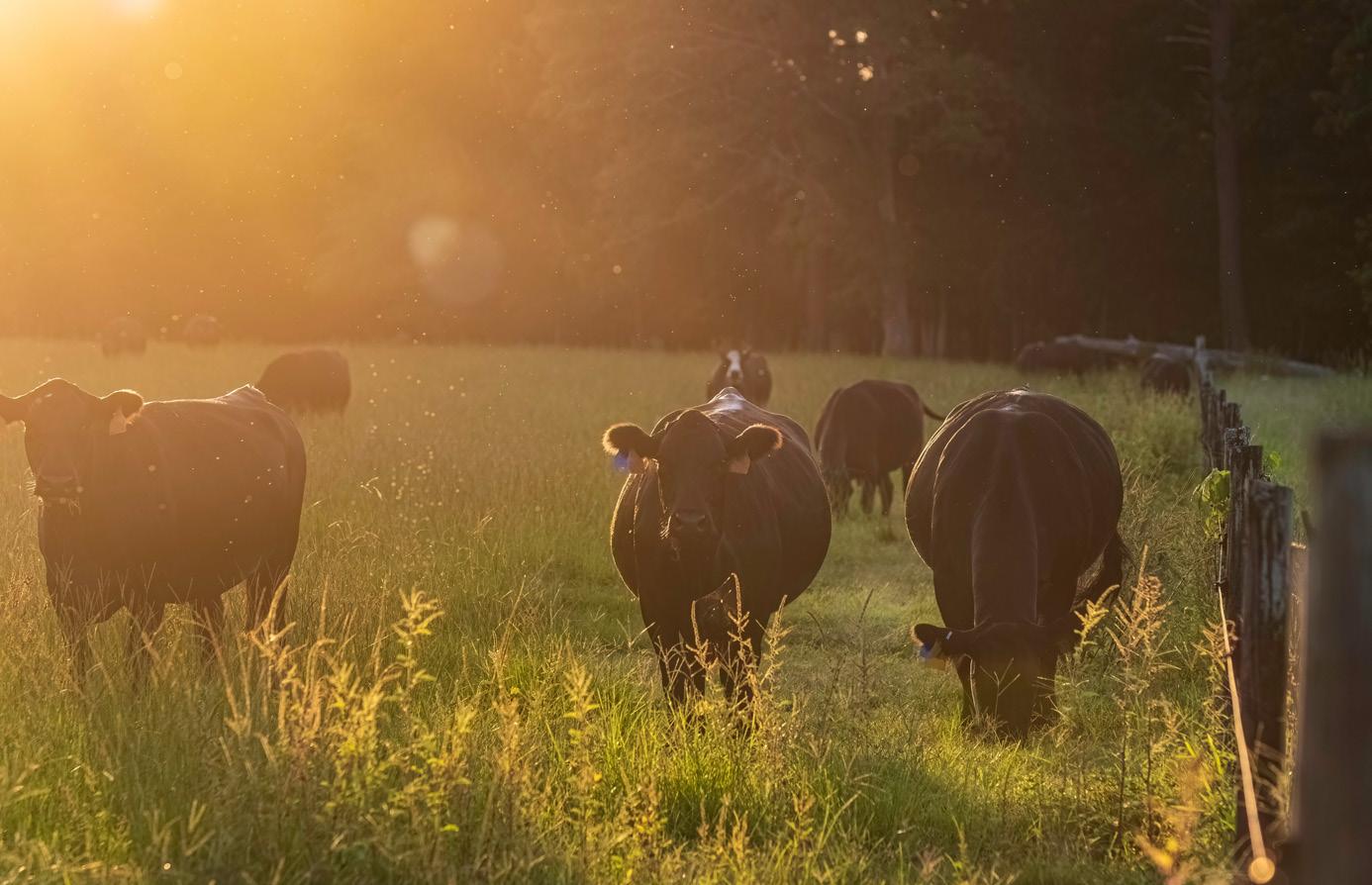
The weaning period is a critical life stage in beef calf development. A wellplanned approach, like a fenceline strategy, can make all the difference.



Livestock market experts explain how to capture maximum value for cattle today.
By Kayla Jennings
Whether filing into a local venue equipped with coffee, cattle and a seasoned auctioneer on the block or logging into a special online sale from anywhere in the country, each week cattle buyers show up to fill orders through auction markets.
From the piney woods of East Texas to the rocky terrain of the Hill Country, livestock marketers share a common passion — generating the highest price possible on behalf of cattle raisers who bring livestock to their markets.
Three experienced auction owners took part in a live demonstration April 11 during the 2025 Cattle Raisers Convention & Expo in Fort Worth. Ken Jordan, of Jordan Cattle Auction; Greg Goudeau, of Navasota Livestock Auction; and Case Craycraft, of East Texas Livestock Auction, joined moderator Tim Niedecken with the Livestock Marketing Association of Texas to share insight on maximizing value for livestock on sale day.
In Texas, about 60% of all ranchers will send cattle through an auction market — annually that equates to 4-5 million head of cattle. It goes without saying, livestock markets play a major role in merchandising different classes of cattle.
“These guys can’t control what’s brought in and what’s dropped off at the market, but they can come in and merchandise that to maximize the value that goes in your pocket,” Niedecken said. “Part of that is capturing value and part of that is adding value.
“Adding value is making sure you put the shots [vaccinations] in. Capturing value is making sure you market those the right way by taking them to a place where they value and put a dollar with that activity.”
Jordan, Goudeau and Craycraft agreed they are in the business of capturing value on behalf of their customers.



During any given week in a livestock market, up to 250 sets of cattle per hour can go through the sale ring, so buyers only have a brief moment to draw a lot of conclusions on the cattle they are purchasing. The men and women sitting in the seats are most often buying cattle for somebody else to fill an order with certain criteria.
“Texas is really unique,” Niedecken said. “A lot of the dealers and order buyers serve an aggregating function.”
According to Niedecken, the average rancher in Texas will sell six or seven head at a time, so order buyers are combining groups to make a uniform set of cattle that fit their purchasing specifications based on where the cattle are going.
“It’s all about perception at all times,” Goudeau said. “He’s got five or six seconds to make a decision on what he’s going to buy — whether he’s going to bid or not on your animal.”
In that quick moment, the panelists agreed that buyers often look at hair coat, color, condition and quality management indicators.
Jordan pointed out the misconception that fatter is always better. In his experience, most calf buyers will actually lean toward thinner cattle for the opportunity for compensatory gain later.
There are also some cues producers can offer to help buyers recognize cattle that have been managed well. For example, Goudeau said if a calf comes in with an ear notch, ear tag and has been castrated, they are already off to a better start than their contemporaries.
“If the producer did those three things, he probably bought some good genetics,” Goudeau added. “He might’ve gone to the feed store, he might’ve gotten vaccines, and therefore, you might be buying a vaccinated, ear-notched, castrated calf sold at the market. Now that’s a perception, but he probably has a better chance of surviving than other calves.”
While there are many differences in marketing weaned cattle versus replacement females, uniformity reins king in both rings. The major differences are number of head in a group and their condition.
To illustrate this, Niedecken shared a video of commercial cows of different ages and breed types to the panelists for their insight. The consensus? Group them into packages and market accordingly.
“All of a sudden, they’ll appeal to somebody,” Jordan said. “They don’t appeal to buyers when they’re all mixed up.”
Jordan said this applies when selling cattle off the ranch, too. Human nature is to remember the outliers or ones that look different, and they often end up being the lowest performing animals out there.


Lightweight - Strong Easy to Clean - Easy to Install Extends the Life of Your Trailer
• Cattle & Horse Trailers
• Scales
• Ramps
• Alleys
• Chutes
• Utility Trailers
• Semi Trailers
PolyCleat Flooring weighs 2.8 lbs/ ft and is less than half the weight of rubber based flooring (7.4 lbs/ft) and also lighter than wood (4.9 lbs/ft).




Tim Niedecken, with Livestock Marketing Association of Texas, moderates a panel during the 2025 Cattle Raisers Convention & Expo. Joining him are, pictured left to right, Greg Goudeau, of Navasota Livestock Auction; Ken Jordan, of Jordan Cattle Auction; and Case Craycraft, of East Texas Livestock Auction.
“That’s just perception,” he added. “When you market cattle, you need to group them all in different lots and put them in uniform groups.”
In addition to uniformity, heavier condition comes into play when selling replacement females, too.
“A guy came up to me the other day and asked, ‘What color sells the best? Tiger stripe, black?’ And I said, ‘Fat,’” Craycraft joked. “Everybody goes for looks, so one in good condition or pretty fleshy would be a great replacement female.”
Regardless of the class of cattle, “it’s all in merchandising,” Jordan said. “It’s not selling.”
Small changes, big reward
Small changes at home allow a livestock market to merchandise cattle instead of just selling them. Goudeau pointed to a scenario involving a bull calf with an ear tag. If a calf comes in with an ear tag, it means the rancher had the opportunity to castrate. Because they did not, an automatic $20 per hundredweight was discounted from the calf.
“You did a great job of going to the bull sales and buying a good quality bull, you probably have good females, but in that situation, you did not do your job to bring them to us where we can really market your cattle,” he said. “We ended up having to sell your cattle instead of market your cattle — and there’s a huge difference in the two.”
Subscribing to a management protocol including vaccination, castration, preconditioning and dehorning does come with up-front

costs, but the practices have proven to pay dividends on sale day.
The panelists agreed their buyers are consistently willing to pay a premium if they can minimize risk — especially in this highstakes cattle market.
Over the last several years, weaned cattle sales have really taken off for this reason. Goudeau said when they started their preconditioned sale about five years ago, many locals said it would not work because of the imbalance of cattle to buyers. But the numbers don’t lie. They successfully sold 5,700 head this January and then 6,400 head in a March offering.
With the advent of internet sales and a need to stock wheat acreage and feedyards up north, Goudeau said preconditioned cattle now bring up to $40 per hundredweight more than the weekly sales because they cater to volume buyers seeking a specific product. Craycraft and Jordan see the same trend in their regions.
“You have to offer what the buyers want, and they’ll give that premium,” Jordan said. “A good part about weaning is it allows you to sell your calf at the right time, too.”
For example, calves selling directly off the cow are limited to those few days in the production calendar, but if a cattle raiser is willing to take the time to get calves on feed, they open up a whole new marketing timeline — offering flexibility to sell in a better market.
“You get into that December market on these lighter calves, and you’ve got the guys that are replenishing the wheat fields, and you’ve got all the guys going to grass,” Jordan explained. “You’ve got huge lists of customers buying lot cattle. That timeframe works extremely well.”
There was an overwhelming agreement from the panelists to make these adjustments because if not, another person may buy the calves at a discount, straighten them out and sell them for a profit later.
“Every sale has guys buying who upgrade cattle,” Craycraft said. “If you can take all those holes out — horns, castration, all that stuff — then you’ve got the No. 1 product that they’re all looking for. You’re going to get top price for it and eliminate the upgradeable cattle.”
Ken Jordan, of Jordan Cattle Auction, discusses marketing opportunities in a live demonstration held during Cattle Raisers Convention & Expo in Fort Worth. In today’s cattle market, he said investing in a bull with quality genetics can pay for itself quickly.
Considering buyer perception and employing best management practices are only two parts of the equation. There are strategies the panelists have refined over the years to ensure top dollar for cattle selling through their markets — timing toward the top of the list.
“Never sell one of your calves between Labor Day and Thanksgiving because they’re born in the spring, sold in the fall. The numbers are large,” Goudeau said. “Buyers can pick your cattle apart then, so try to wean, vaccinate and get them ready. Move out of that marketing timeframe, and you’ll be dollars ahead.”
The period between September and November also brings weather that increases sickness and associated risks for buyers. “People are even more conscious of what they’re buying now,” Jordan added.
In the same breath, the high market also offers an opportunity to invest in bulls that improve genetics — allowing producers to capitalize on market tendencies to bring extra dollars to the table in the years to come.
“I can change a cow faster with a bull than I can with females,” Jordan said. “If y’all ever want to have improvement, bulls are definitely the way to go. That bull today will pay for itself very quickly.”
For example, Jordan said if a bull services 25 cows for five years, it can produce about 125 calves. He estimated that a $50 per-head premium on each of those calves can more than purchase a quality bull. The panelists
said a bull with high genetic merit can mitigate some problems that often come through their markets, like calf variability and risks associated with dehorning.
“What’s the best set of dehorners that you can use to dehorn cattle? A polled bull,” Goudeau added. “The right bull will dehorn the cattle for you.”
This discussion only scratched the surface of the experience and marketing know-how Jordan, Goudeau and Craycraft have, but they encouraged cattle raisers to partner with local livestock markets to enhance profit off the ranch.
“I think all of us here, we try to market the cattle to the best of our ability,” Jordan said. “We know a lot of the folks who are at the next level, the next people who will buy your cattle. We talk with them every week that we’re involved with them, so we understand what they need.”
Every operation and region will hold nuances that cattle raisers must learn to capture value for their product. That requires seeking advice from others, incorporating best management practices and running the numbers.
“It’s a matter of striking the right balance on that ledger for your respective environment and the kinds of animals that work best in your respective area,” Niedecken said. “When you really boil down merchandising, as they’re describing across three very different markets and sets of suppliers into those markets, this game of balance is what’s being played.” T C

TSCRA’s presence in Austin drives rural victories during the 89th Legislative Session.
By Paige Holbrooks


Every two years, the Texas Legislature convenes for a whirlwind 140-day session — and in the background, steadily and strategically working to protect the interests of landowners and cattle raisers, is Texas & Southwestern Cattle Raisers Association.
The association’s policy priorities are directly shaped by its members. This work begins through policy committees, which bring forward priorities to be adopted by the board of directors. From there, leaders help these policies take shape. During the 89th Legislative Session, which concluded June 2, these efforts included 15 members lending their voices in 28 public hearings.
Texas & Southwestern Cattle Raisers Association tracked and monitored 250 bills, educated legislative offices on association priorities and collaborated with industry groups. These efforts led to a successful legislative session for Texas & Southwestern Cattle Raisers Association, with 11 priority bills passed on topics ranging from private property rights to protecting the integrity of the beef industry.
Among the association’s top victories during the 89th Legislative Session was Senate Bill 503, a modernization of the state’s livestock brand registration system.
Authored by Sen. Charles Perry and sponsored by Rep. Ryan Guillen, the bill moves brand registration into the digital age without sacrificing the integrity of the original system. Gov. Greg Abbott signed the policy into law May 3 and it will go into effect Sept. 1.
Historically, each of the state’s 254 counties has maintained its own brand book, with no centralized digital database. This antiquated approach has made it difficult for all law enforcement, including Texas & Southwestern Cattle Raisers Association Special Rangers, to track down lost or stolen livestock, while also requiring brand owners to visit each county where their cattle reside to register their brand.
Texas & Southwestern Cattle Raisers Association Special Ranger Joe Aguilar Jr. made a trip to the Capitol in Austin to voice his perspective on the bill.
“This registry will improve overall efficiency, reduce errors and benefit all parties involved — producers, clerks and law enforcement — as they manage and utilize brands across Texas,” Aguilar told the House Agriculture and Livestock Committee during a March public hearing.
S.B. 503 establishes a unified, secure digital brand registry housed within the Texas Animal Health Commission. To preserve privacy, access to owner information remains restricted to county clerks and law enforcement.
County and district clerks were critical partners in this legislation. From an administrative perspective, they are responsible for ensuring county brand data is accurately entered into the new database. Their work forms the backbone of this new process and supports its longterm success.
“Clerks have relied heavily on paper records, making it difficult to verify ownership, track stolen livestock and share information across counties quickly,” said John Warren, Dallas County Clerk and County & District Clerk’s Association of Texas president.
“This modernization was necessary to streamline the process, enhance transparency and improve coordination between counties and law enforcement.”
As the next brand registration period approaches in 2031, S.B. 503 creates the needed framework to modernize the process overall and improve efficiencies at the county level and beyond.
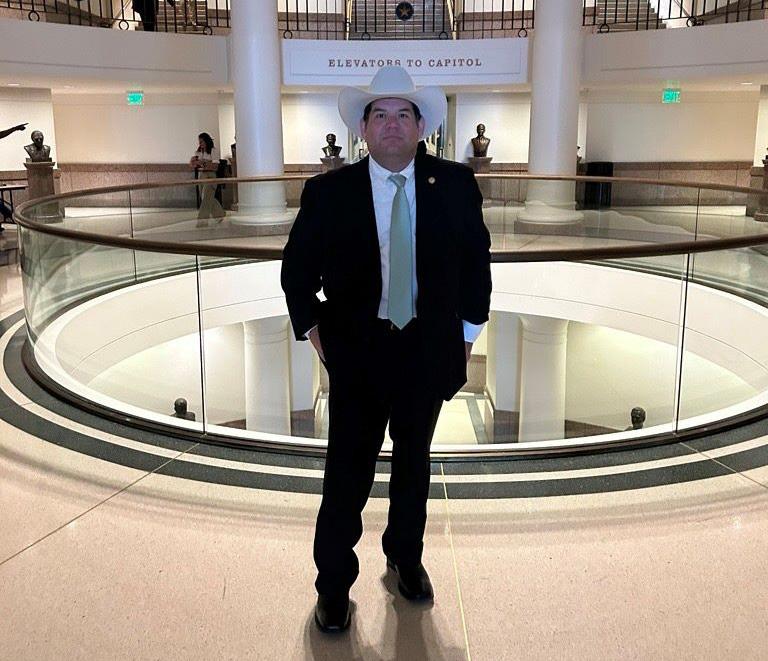
The Texas Legislature also made a significant move in food integrity and consumer safety. S.B. 261, authored by Perry and sponsored by Rep. Stan Gerdes, imposes a two-year ban on the sale and marketing of cell-cultured protein in Texas for human consumption.
Cell-cultured protein, which is produced by replicating animal cells in a lab, has drawn concern from the association and other groups around the world due to its potential health risks and the unclear role it may play in the broader beef marketplace.
“Despite the fact that U.S. ranchers produce 19% of the world’s beef with only 6% of the world’s cattle, some have decided a lab is better than a pasture,” said Texas & Southwestern Cattle Raisers Association President Carl Ray Polk Jr.
Polk, along with the association’s Second Vice President and Secretary/Treasurer Dan Gattis, testified in support of S.B. 261 before both the Senate Committee on Water, Agriculture and Rural Affairs and the House Committee on Public Health.
“TSCRA was met with staunch resistance to this legislation from companies in California and a think tank out of Washington, D.C.,” said Texas & Southwestern Cattle Raisers Association Executive Director of Government Relations Melissa Hamilton. “Hard work and collaboration with others in the agricultural community contributed to this bill crossing the finish line.”



Amid claims of food freedom infringement from the opposition, Rep. Briscoe Cain makes clear to his colleagues during a floor debate on S.B. 261: the real agenda isn’t choice — it’s control over whether we eat meat at all.
In addition to expressing opposition to cell-cultured proteins, the association sought uniform labeling requirements for alternative, plant-based and cellcultured proteins. During the 88th Legislative Session, these efforts were successful with the passage of S.B. 664, the state’s truth in labeling law. However, those efforts have already drawn legal challenges from alternative protein advocates.
“The same industries, individuals and organizations who promote and finance this unsafe product are also some of the first to oppose or mount legal challenges against our state’s truth in labeling laws that require them to disclose their product is cell-cultured,” said Gattis during a March hearing before the Senate Committee on Water, Agriculture and Rural Affairs.
For now, S.B. 261 buys time: a necessary pause allowing for continued research while protecting consumers and safeguarding the integrity of Texas beef, a product that ranchers have spent generations perfecting. The legislation was signed into law by Gov. Abbott on June 21 and goes into effect Sept. 1.
In the wake of the devastating 2024 wildfires, which scorched wide regions of the Texas Panhandle and western Oklahoma, Texas & Southwestern Cattle Raisers Association championed a package of wildfire prevention and response measures.
“Since we know the sources of the Panhandle wildfires and know we can do something about it, action must be taken now — before more lives, communities, animals and ranches are left burned and devastated,” said Joe Leathers, a Texas & Southwestern Cattle Raisers Association director and executive committee member.
In total, six key pieces of legislation were passed to strengthen the capacity of rural volunteer fire departments; enhance the state’s emergency response capabilities; and implement new regulations for electric infrastructure on traditional utilities and at oil and gas
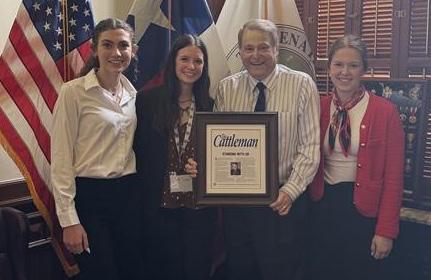
Sen. Brian Birdwell, House Bill 2663 Senate sponsor and Texas landowner advocate, poses with Leadership Launch attendees as they presented his Standing with Us article from the June 2025 issue of The Cattleman
sites — often the ignition point for many fires that occur in rural Texas.
Most notably, legislation authored by Rep. Ken King establishes proactive requirements for the Public Utility Commission and the Railroad Commission of Texas. House Bill 143 requires the agencies to better monitor infrastructure under their jurisdiction, instituting a specific process to promptly resolve problems.
H.B. 2663, authored by Rep. Drew Darby, added new requirements for terminating electrical services on inactive wells and implemented penalties of up to $25,000 for noncompliance for each offense.
Texas & Southwestern Cattle Raisers Association’s members Craig Cowden, James Henderson, Joe Leathers, Currie Smith and Dale Smith shared their personal experiences with legislators and testified before committees on behalf of Texas ranchers in the Panhandle and across the state — expressing the need to effectively regulate the utility and oil and gas industries.


“After last year’s fire, I was encouraged by the Railroad Commission to submit formal complaints on questionable electrical infrastructure on my property. Since then, I have submitted 34 complaints on 102 wells,” said Cowden during an April hearing of the House Committee on Energy Resources. “The commission has found 138 violations on the 102 wells I turned in. Obviously, there is a serious problem.”
Also passed as part of the wildfire legislative efforts was S.B. 34. Authored by Sen. Kevin Sparks, the bill provides crucial assistance to rural volunteer fire departments by requiring at least 10% of Rural Volunteer Fire Department Assistance funds to be awarded to areas at higher risk for large wildfires.
The legislation also creates a statewide equipment database held by Texas A&M Forest Service for volunteer departments to access available inventory. In addition, Texas A&M Forest Service and West Texas A&M University will launch a study to determine wildfire risk zones based on fuel loads of flammable material like vegetation.
“Rural volunteer fire departments are the only source of protection against all fires, including wildfires, for rural Texans. Therein lies the need for a statewide equipment database and adding well deserved funding to these departments,” said Polk during his testimony before the Senate Committee on Water, Agriculture and Rural Affairs for support of S.B. 34.
While legislation passed this session represents a major step forward, Texas & Southwestern Cattle Raisers Association warns members that the work is far from over. Data from Texas A&M Forest Service shows that 60 to 80% of Panhandle wildfires since 2006 were humancaused. The association remains committed to longterm solutions that protect rural communities and the ranching way of life.
As of June 21, Gov. Abbott has signed into law all six wildfire mitigation and response bills supported by the Texas & Southwestern Cattle Raisers Association.
As the old saying goes, “Whiskey is for drinking and water is for fighting.”
Few issues ignite the passion of rural Texans like water rights, and Texas & Southwestern Cattle Raisers Association was at the forefront of defending them during the recent session. The association opposed several bills that threatened to undermine landowner control over water — particularly the oil and gas industry’s attempt to lay claim to groundwater through legislation involving produced water.
H.B. 49 aimed to grant oil and gas operators full ownership of produced water and strip away most company liability for its reuse. It also preemptively defined legal rights ahead of the Cactus Water Services v. COG Operating decision, delivered June 27 — a pivotal
legal battle over who controls the water extracted during oil production.
“While we believe most operators and companies will act in good faith, the language in the bill provides an open door for bad actors to play the system — sell contaminated waste, make their money and exit with little to no recourse available for the wronged party or those downstream,” said James Dudley IV, a Texas & Southwestern Cattle Raisers Association director and property rights and tax committee chair.
Due to the opposition, stakeholders and legislators met with association leaders to come to an agreement. The compromise allows the waste transport industry to develop, while equally protecting property owners’ rights by removing the liability protections for the waste transport industry. Additionally, the controversial definition of produced water was removed from the final bill.
Meanwhile, S.B. 1763 sought to revise the definition of brine in a way that Texas & Southwestern Cattle Raisers Association said was another attempt to preempt the Texas Supreme Court case and the thenpending decision on produced water.




Phone: 806-655-3033 • 325-554-7434
Cell: 806-683-4613
steve@expressscale. com www.expressscale.com

“As Texas’ foremost advocate for private property rights of our state’s ranchers and rural landowners, TSCRA opposes Senate Bill 1763 because it conflicts with legal rule in Texas that the landowner owns the groundwater,” said Texas & Southwestern Cattle Raisers Association Past President Arthur G. Uhl III to the Senate Committee on Natural Resources in a March public hearing.
Thanks to the association’s opposition to the legislation, the bill was stalled in committee and never moved further through the legislative process.
Early on, the 89th Legislative Session was coined the “water session.” This was largely based on Perry’s water infrastructure plan for the state, S.B. 7, and the funding mechanism for this plan secured in Rep. Cody Harris’ House Joint Resolution 7.
A key provision of the legislation is a constitutional amendment, which will be up for a statewide vote on the November ballot as Proposition 4, to dedicate revenue to the Texas Water Fund provided in H.J.R. 7 derived from state sales and use taxes. S.B. 7 maps out the use of these funds allocated to improving water infrastructure, seeking new sources for usable water and adding water storage solutions.
Texas & Southwestern Cattle Raisers Association fought to keep funds allocated through S.B. 7 from being used to condemn private land for reservoir development. Ultimately, the bill only allowed reservoir projects where the land has already been purchased or secured through easements — typically by a government entity or a water development authority to be eligible for potential funding under this legislation.
“Many of our members have experienced firsthand the devastating consequences of eminent domain used to construct reservoirs. The loss of generational land, the disruption to agricultural operations and the displacement of families cannot be overlooked,” said Anson Howard, a Texas & Southwestern Cattle Raisers Association director and property rights and tax committee vice chair.
As the legal landscape evolves, the association will continue to advocate for clear, fair protections for those whose livelihoods depend on reliable access to both surface and groundwater as both are essential to livestock production. T C
Paige Holbrooks is director of policy and political communications for Texas & Southwestern Cattle Raisers Association.
Texas & Southwestern Cattle Raisers Association recognizes the following policymakers and leaders for their dedicated support of the state’s ranchers, landowners and rural citizens during the 89th Regular Texas Legislative Session.


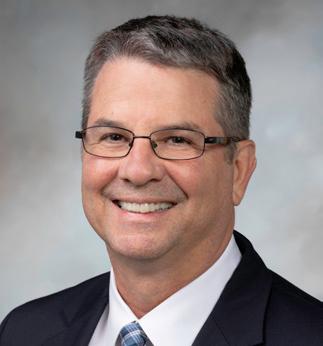
Sen. Kelly Hancock District 9
S.B. 2980 & S.B. 2984 Author; S.B. 261 Co-author; H.B. 143 Sponsor; H.J.R. 7 Co-sponsor

Sen. Brian Birdwell District 22
S.B. 2601 Co-author; H.B. 2663 Sponsor; H.J.R. 7 Co-sponsor
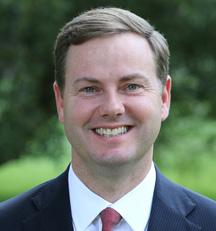
Rep. Trent Ashby District 9
H.B. 2018 Author; H.B. 147 Joint Author; H.J.R. 7 & H.B. 43 Co-author; S.B. 503 Joint Sponsor; S.B. 261 Co-sponsor


Sen. César Blanco District 29
S.B. 2601 Author; S.B. 34, S.B. 497, S.B. 767 & S.B. 868 Co-author; H.J.R. 7, H.B. 43 & H.B. 2663 Co-sponsor

Rep. Caroline Fairly District 87
H.B. 2063 Author; H.B. 143 & H.B. 147 Joint Author; H.J.R. 7 & H.B. 43 Co-author; S.B. 767 Sponsor; S.B. 503 Joint Sponsor

Rep. Stan Gerdes District 17
H.B. 1431 Author; H.J.R. 7 & H.B. 43 Co-author; S.B. 261 Sponsor

Sen. Adam Hinojosa
District 27
S.B. 2970 Author; S.B. 767 Co-author; H.B. 2018 Sponsor; H.J.R. 7 & H.B. 43 Co-sponsor
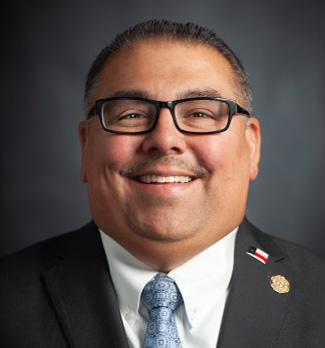
Rep. Ryan Guillen District 31
H.B. 147 Author; H.B. 43 Joint Author; H.J.R. 7 Co-author; S.B. 503 & S.B. 2601 Sponsor


Rep. Ken King
H.B.
District 88

S.B.









Join or renew your membership today.
Member benefits include the support of TSCRA Special Rangers, government relations advocacy, educational programs, networking and social events, member-only discounts, The Cattleman magazine and phone app, and insurance services.

To learn more about membership, scan the code above or visit TSCRA.org.
Companies whose values and mission align with Texas & Southwestern Cattle Raisers Association are invited to join the organization and engage directly with our 28,000+ members. As a TSCRA Business Partner Member, your company will be part of a community that shares a commitment to advancing the cattle industry and its future.
Exclusive sponsorship opportunities and discounts Access to the TSCRA Business Partner logo Up to nine memberships A printed copy of The Cattleman








30% OFF at Cabela's and Bass Pro Shop
10% OFF CattleMax Software
15% OFF Ranchbot products
John Deere Rewards upgrade
20% OFF at Boot Barn (in-store only) Ford X-Plan vehicle pricing

Texas & Southwestern Cattle Raisers Association wrapped up this year’s Summer Meeting June 21, bringing together a record number of board directors, executive committee members and policy committees, as well as the Cattle Raisers PAC board. More than 300 landowners, wildlife managers and cattle raisers joined the meeting to advance the future of the cattle industry, address pressing issues like the New World screwworm and recap the 89th Regular Texas Legislative Session.
Held in San Antonio, the two-day event officially kicked off June 20 with sessions focused on the cattle industry’s most relevant topics. Attendees heard from experts on the history of the Alamo, received legislative updates from Texas & Southwestern Cattle Raisers Association Government Relations staff, and explored tax policy changes and risk management tools designed to support producers.
The event’s agenda also highlighted one of the most pressing threats to livestock and wildlife: the New World screwworm. Experts from Brazil, Panama, Nicaragua and Guatemala provided a global perspective on the devastating pest, sharing their experiences and strategies in managing outbreaks and protecting animal health.
The meeting concluded with an in-depth discussion on consumer trends, beef demand and the vital role Texas cattle producers play in meeting the needs of an evolving marketplace. Beyond the scheduled programming, Texas & Southwestern Cattle Raisers Association also engaged with industry partners to gain deeper insight into the challenges facing all segments of the cattle industry.





On June 18, U.S. Secretary of Agriculture Brooke Rollins announced Moore Airfield Base in South Texas as a location for a U.S.-based sterile fly dispersal facility to combat the spread of the New World screwworm. The announcement came after a resurgence of NWS in southern Mexico that prompted significant actions from both lawmakers and federal agencies to protect the U.S. agricultural industry.
Stephen Diebel, Texas & Southwestern Cattle Raisers Association first vice president, attended the announcement to show the association’s support and emphasize the importance of protecting the U.S. beef herd.
“Today’s announcement is pivotal in protecting the U.S. cattle industry,” Diebel said. “Sterile flies are the only known way to stop the reproduction and continued expansion of NWS, and it’s reassuring to see Secretary Rollins follow through on her early commitment to increase production of sterile flies domestically.”
The dispersal facility is anticipated to be complete by the end of 2025, with future plans for a domestic fly rearing facility. Before the announcement, USDA approved $165 million in emergency funding to combat NWS. These funds have been allocated to support the release of sterile male flies to control the screwworm population and establish USDA-approved inspection and treatment holding pens near the border.
As the only sterile fly facility in the world, COPEG in Pacora, Panamá, is currently operating at full capacity and producing up to 117 million flies per week. As the NWS migrates north, the need for additional flies will
continue to rise. While NWS can be treated, the only proven method for eradication is releasing sterile male flies to mate with wild females to collapse the population over time. The U.S. owned a facility in Chiapas during the screwworm outbreak in the 1960s but it has since been closed.
“Texas cattle raisers are taking the threat of NWS seriously, and to have leadership who understand the importance of mitigation efforts will help protect the U.S. beef herd,” said Texas & Southwestern Cattle Raisers Association President Carl Ray Polk Jr. “These actions, including steps to protect our beef supply at key entry points, will be essential to prevent the spread of NWS and safeguard the livelihoods of ranchers and landowners across the continent.”
Will Baugh joined Texas & Southwestern Cattle Raisers Association as director of development June 16. In his new role, Baugh assists with fundraising efforts for the TSCRA Leadership Development Foundation, Special Ranger Foundation and Cattle Raisers PAC.
Prior to his arrival at the association, Baugh worked for National Cattlemen’s Beef Association as associate director of operations for the government affairs department in Washington, D.C.

Will Baugh
Born and raised in Cleveland, Mississippi, he earned a bachelor’s degree in agricultural development from Mississippi State University and a master’s degree in public administration from the Bush School of Government and Public Service at Texas A&M University. Baugh currently resides in Fort Worth. T C
Dr. Tim R. Turner, president and owner of Southwestern Livestock Mineral Co., was honored as an outstanding alumnus by the Texas A&M College of Veterinary Medicine & Biomedical Sciences for his contributions to the field of veterinary medicine.
Turner is a visionary veterinarian, innovative entrepreneur and passionate advocate for rural veterinary medicine. A leader in his field, Turner has dedicated his life to advancing the livestock industry, mentoring young professionals and serving his community.

Raised on his family’s ranch in Water Valley — with roots dating back to 1877 — Turner developed a deep appreciation for animals, agriculture and the people who dedicate their lives to both. Inspired by his father’s veterinary career, Turner pursued the same profession at Texas A&M University, earning a bachelor’s degree in finance in 1974, a bachelor’s degree in veterinary science in 1976, and a Doctor of Veterinary Medicine degree in 1977.
After completing his studies, Turner returned to his family ranch, combining his education and entrepreneurial spirit to address gaps in the livestock industry. In 1980, he purchased Southwestern Livestock Mineral Co. — a company that revolutionized livestock nutrition through custom mineral supplements.
By personally delivering products to clients, Turner forged deep relationships and gained a firsthand understanding of the challenges faced by his community. These connections, coupled with his expertise and innovation, solidified his reputation as a trusted leader and pioneer in his field.
Turner’s leadership goes beyond his entrepreneurial success. He has held pivotal roles in organizations such as Texas & Southwestern Cattle Raisers Association, Texas Sheep and Goat Raisers’ Association and the Texas Veterinary Medical Association.
Turner currently lives on his ranch in Water Valley with his family, where he and his wife, Judy, continue to play an active role in their community and enjoy spending time with their grandchildren.
Turner was among five graduates from Texas A&M University recognized in 2025 for their dedication to bettering the world. Other recipients of the college’s 2025 Outstanding Alumni Award are Dr. Ryan N. Doan, Dr. Guy W. Johnsen and Dr. Oscar J. “Bubba” Woytek. Dr. Jessica Y. Rodriguez was presented this year’s Rising Star Award.
Jan Lyons, of Manhattan, Kansas, has been selected as the 2025 National Golden Spur Award recipient for her contributions to the ranching and livestock industries. Lyons will receive the National Golden Spur Award at the Lubbock Memorial Civic Center during the annual National Golden Spur Award Honors Oct.4.

“The National Golden Spur Award is the most prestigious national honor given by the ranching and livestock industries to one person,” explained Jim Bret Campbell, executive director of the Ranching Heritage Association and National Ranching Heritage Center. “As the 47th recipient, Jan Lyons continues the tradition of excellence that characterizes National Golden Spur Award honorees.”
The National Golden Spur Award is a joint annual recognition presented by six of the leading state and national ranching and livestock organizations: the American Quarter Horse Association, National Cattlemen’s Foundation, Ranching Heritage Association, Texas Cattle Feeders Association, Texas Farm Bureau and Texas & Southwestern Cattle Raisers Association.
A lifelong rancher and co-owner of Lyons Angus Ranch in Manhattan, Kansas, Lyons has committed decades to advancing the beef industry with integrity, vision and resilience. Her leadership has spanned some of the most challenging and transformative periods in modern ranching.
Lyons rose through the ranks of ranching organizations, becoming the first woman president of both the Kansas Livestock Association and Kansas Angus Association. She later chaired the Cattlemen’s Beef Board in 1996 and served as president of the National Cattlemen’s Beef Association in 2004. Her leadership during the 2003 Bovine Spongiform Encephalopathy crisis was widely praised for its calm, science-based reassurance to consumers and producers alike.
A steadfast advocate for beef promotion and genetic improvement, Lyons played a critical role in advancing consumer confidence, guiding public communications, and supporting groundbreaking industry initiatives like the national checkoff program. Beyond her accolades, Lyons is celebrated for her mentorship, consensusbuilding and unwavering dedication to ranching.
Sponsorship packages for the National Golden Spur Award Honors, including table sponsorships, are currently available. Individual tickets for the National Golden Spur Award Honors will go on sale to the public in August. For event details, visit goldenspurhonors.com.
The Beef Improvement Federation honored four faculty members in Texas A&M University’s College of Agriculture and Life Sciences at its annual symposium on June 12 in Amarillo.
The BIF Pioneer Award recognizes individuals who have made lasting contributions to the improvement of beef cattle. The award, established in 1973, has been presented to numerous leaders in the beef industry. Steve Hammack, Ph.D.; Joe Paschal, Ph.D.; and Jim Sanders, Ph.D., were named 2025 recipients of the BIF Pioneer Award.
The recipient of the BIF Continuing Service Award was Clay Mathis, Ph.D., professor and head of the Department of Animal Science. The award is presented to individuals who have made major contributions to the organization. This includes serving on the board of directors, speaking at conventions and working behind the scenes to advance the federation’s mission.
Hammack, professor and Texas A&M AgriLife Extension Service beef cattle specialist emeritus, served as the AgriLife Extension beef cattle specialist based in Stephenville from 1973 to 2003. He continued part-time in that role until 2023. Hammack’s primary interests focus on genetic management and cow-calf production systems.
Paschal, a professor and AgriLife Extension livestock specialist emeritus, began as a district livestock specialist in Fort Stockton in 1986 and transferred to Corpus Christi in 1988. He conducted educational programs for adults and youth throughout the Coastal Bend and South Texas districts for 38 years. His work with various breeds and crosses led to research on carcass merit and tenderness in Brahman genetics.
Sanders, senior professor emeritus of animal breeding and genetics, taught in the department of animal science until his retirement in 2023. He taught undergraduate and graduate courses in animal breeding and conducted research on beef cattle breeding and genetics, especially among Bos indicus-influenced breeds and crosses. Sanders began his research
with systems analysis of beef cattle production and developed the first beef cattle simulation model.
Mathis began his career in 1998 as an extension livestock specialist at New Mexico State University. In 2010, Mathis became director of the King Ranch Institute for Ranch Management in Kingsville. During his tenure, 39 students graduated with master’s degrees in ranch management, subsequently gaining key industry positions nationwide. In 2023, Mathis was hired as department head at Texas A&M University.
He has provided leadership on numerous national committees and working groups, including the U.S. Roundtable for Sustainable Beef and the National Beef Quality Assurance Advisory Group. His career reflects a passion for improving cattle production practices and supporting the people who power the beef industry.
Due in part to a sharp decline in shipments to China, April exports of U.S. beef trended lower than a year ago, according to data released by USDA and compiled by the U.S. Meat Export Federation.
China’s retaliatory duties are a major headwind for both U.S. beef and pork, while beef exporters face an additional obstacle. China has failed to renew establishment registrations for U.S. beef plants and cold storage facilities, the majority of which expired in mid-March.
April beef exports totaled 100,659 metric tons, down 10% from a year ago, while value fell 8% to $824.5 million. Exports to China declined nearly 70% and shipments also trended lower to Mexico, Taiwan and the Middle East. These results were partially offset by larger exports to South Korea, Japan and Central and South America.
For January through April, beef exports were 3% below last year’s pace at 411,027 metric tons. Export value was down just 1% to $3.35 billion.
“We expected beef shipments to China to hit a wall in April, due to the one-two punch of higher tariffs and expired plant registrations,” said U.S. Meat Export Federation President and CEO Dan Halstrom. “We are hopeful that these issues will be resolved soon and are encouraged by developments on trade negotiations with China. In the meantime, USMEF remains committed to market diversification and we have accelerated efforts to develop alternative destinations for cuts and variety meat items normally shipped to China.”
China’s total duties on U.S. beef peaked in April at 147%. The rate was lowered to 32% on May 14 when the U.S. and China agreed to a temporary de-escalation to allow for further negotiations. Product that shipped prior to April 10 was allowed to clear without the additional 125%, provided it arrived by May 13. President Donald Trump spoke with Chinese President Xi Jinping on June 5 and said further talks will be held soon. T C
Ranching 101 webinar to cover weaning protocols.
Join Texas & Southwestern Cattle Raisers Association for a Ranching 101 webinar at 1 p.m. Tuesday, Aug. 19, to learn how strategic weaning protocols can boost calf performance and increase ranch profitability.
During the hour-long Zoom session, participants will explore how strategic practices before, during and after weaning can set salebound calves up for success. The featured speaker will also cover how standard protocols can and should be translated to buyers.
Hear a buyer’s perspective on what they are looking for when it comes to purchasing weaned calves. Whether just getting started or refining a current system, the webinar will provide tools to make smarter, more profitable management decisions.
Ranching 101 webinars provide participants with practical, sound guidance on the tools and equipment needed to get started in ranching or land ownership. The webinars are available online on the third Tuesday of every month. Registration is complimentary for any association member. Visit tscra.org to learn more. T C

Ranching 101 is presented by:



The TSCRF proudly awarded three $5,000 scholarships to students nearing completion of a Doctor of Veterinary Medicine degree from Texas A&M’s College of Veterinary Medicine and who are planning careers in large animal medicine.

Drew grew up in a rural community and understands the importance of advocating for proper care for underserved communities and creating relationships with producers. His goal is to serve as a large animal veterinarian and specialize in theriogenology so that producers have the opportunity to receive advanced reproduction consulting and performance care.

Jack has family ranching roots from northern New Mexico and in recent years has expanded his exposure to the feedlot side of the cattle industry in the Texas panhandle. He has gained a broad perspective of the needs of rural producers and intends to open a veterinary practice focused on large animals in a small community. He is focused on assisting ranchers by improving herd health plans and performance.

Payton grew up in north Texas watching her family grow a small herd of angus cattle. Throughout her life, agriculture has remained a passion, and she has actively sought opportunities to expand her knowledge and advocacy work within the industry. She plans to pursue a mixed animal practice in a rural community, while also aspiring to mentor local students participating in 4-H and FFA.

These scholarships are made possible by private donations. If you would like to make a contribution to the TSCRF scholarship program, please contact Gabrielle Harris at gharris@cowgirl.net or 817-332-8551.
JAMES VIRGIL MARTIN JR., 80, of Sweetwater, died May 20.
Martin enjoyed a banking career of more than 48 years in Lubbock, El Paso and Abilene, and retired as CEO of First Financial Bank in Sweetwater.
Growing up, Martin showed Hereford and Angus cattle. He was the youngest member of the Nolan County Livestock Team that represented Texas at the American Royal National Livestock Judging Contest in Kansas City.
Martin attended Texas Tech University and majored in finance. He was also a graduate of Southwestern Graduate School of Banking at Southern Methodist University. He married his high school sweetheart, Betty Neves Martin, Sept. 11, 1965. They were married for 59 years.
After retirement, he and Betty lived on a small cattle operation in Fisher County.
Martin is survived by his wife; two daughters, Jamie (Mike) Looney and Jana (Jay) Bearden; granddaughter, Savannah Bearden; grandsons, Michael (Julie) Looney and Jackson Bearden; three great-grandchildren; and other extended family and friends.
JOHN M. “JACK” SHELTON III, 99, of Amarillo, died June 10.
A past president of Texas & Southwestern Cattle Raisers Association, Shelton was a cow-calf producer, stocker operator and commercial cattle feeder. He owned and operated Bravo Ranch in Oldham County, where he raised Angus cattle. He also had interests in Texas Beef Producers, Palo Duro Feedyard and various other partnerships.
Born in 1925, Shelton attended New Mexico Military Institute and University of Texas. During World War II, he served in the 1st Cavalry Division and the American Infantry Division in the Philippines and the occupation forces in Japan. After the war, he received a commission as a Second Lieutenant in the Air Force Reserve.
Elected to the Texas & Southwestern Cattle Raisers Association board of directors in 1957, he became president in 1984 after serving as first vice president. Throughout the years, he was also an active leader in many local, regional, state and nationwide groups.
Shelton is survived by his wife of 73 years, Joan Johnson Shelton; four children, Malcolm (Claudia) Shelton, Jim (Ginny) Shelton, Elise (John) Shelton Maynard and Mary Ellen (Larry) Shelton Puls; 13 grandchildren and 33 great-grandchildren. T C



Cactus Feedyard
Matthew Turney, Manager
Cactus, TX office: (806) 966-5151 cell: (806) 282-7077
Centerfire Feedyard
Adam Gerrond, Manager Ulysses, KS office: (620) 356-2010 cell: (806) 390-9034
When Our Folks Drive Through the Gate They Think and Act Like Owners Because They Are Owners - They Have a Vested Interest in the Cattle They Care For
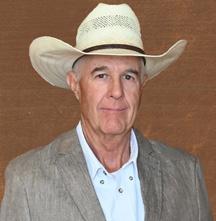


Frontier Feedyard
Jon Vanwey, Manager Spearman, TX office: (806) 882-4251 cell: (719) 251-2381
Stratford Feedyard
Pistol Audrain, Manager
Stratford, TX office: (806) 396-5501 cell: (806) 753-7133
Burlington Feedyard
Logan Hardin, Manager
Burlington, CO office: (719) 346-8532 cell: (620) 575-6702

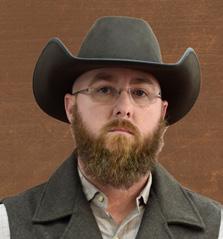

Southwest Feedyard
Kacey Graham, Manager Hereford, TX office: (806) 364-0693 cell: (806) 316-8799
Hale Center Feedyard
Rusty Jackson, Manager
Hale Center, TX office: (806) 879-2104 cell: (806) 773-9457
Ulysses Feedyard
Adam Gerrond, Manager Ulysses, KS office: (620) 356-1750 cell: (806) 390-9034
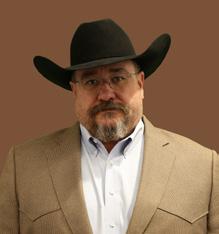



Wolf Creek Feedyard
Keith Brinson, Manager Perryton, TX office: (806) 435-5697 cell: (806) 282-7588
Wrangler Feedyard
Randy Shields, Manager Tulia, TX
office: (806) 583-2131 cell: (806) 290-0559
Syracuse Feedyard
Phil Moreman, Manager
Syracuse, KS
office: (620) 384-7431
cell: (806) 340-4790




Rawhide portable cattle corral stolen in Hale County.
Texas & Southwestern Cattle Raisers Association
Special Ranger Michael Looney reports a Rawhide portable cattle corral, serial No. 019365, stolen from a property on Interstate 27 south of Hale Center. The corral was stolen around April 29. Anyone with information on this case is urged to contact Looney at 806-778-2585.
Tractor stolen in Fannin County.
Texas & Southwestern Cattle Raisers Association
Special Ranger Randolph McGee reports a 2009 John Deere 6430 tractor with a front-end loader stolen from a property off County Road 2250 in Ivanhoe. The suspect(s) cut the fence and loaded the tractor onto a trailer. The incident occurred between May 21-23. Anyone with information on this case is urged to contact McGee at 903-821-7506.
Cattle stolen in Rusk County.
Texas & Southwestern Cattle Raisers Association
Special Ranger Larry Hand reports three black cows stolen from a property off FM 322 in northern Rusk County. The cows have a “WPT” branded on their left hip. The theft occurred between the night of May 13 and the morning of May 15.
Attempted cattle theft in Gregg County.
Hand also reports an attempted cattle theft off FM 2011 West in Longview. The unknown person(s) forced open two sets of locked ranch gates, where yearlings had been on feed and were released from working pens. The incident occurred between May 4-5. Anyone with information on these cases is urged to contact Hand at 903-571-3488.
Angus cow-calf pair missing in Schleicher County.
Texas & Southwestern Cattle Raisers Association
Special Ranger H.D. Brittain reports a black Angus cow-
calf pair missing from a pasture north of Eldorado. The cow has a blue ear tag with No. 30, a left ear notch at the tip and a brand on her left shoulder. The pair got out through a hole in the fence. They were last seen in February. Anyone with information on this case is urged to contact Brittain at 325-340-2268.
Steers missing in Falls County.
Texas & Southwestern Cattle Raisers Association Special Ranger Chace Fryar reports 60 head of red and black steers missing from a property off County Road 223 in Marlin. The steers weigh 820 pounds on average, are branded with a “rocking NL connected” on their left hip and have a blue ear tag No. 500-1000 with the owner’s name and contact information. They were last seen in March. Anyone with information on this case is urged to contact Fryar at 281-734-4078.
Bull missing in Austin County.
Texas & Southwestern Cattle Raisers Association
Special Ranger Nathan Hale reports a black-and-white bull missing from a pasture off Glaeser Road in Bellville. The bull weighs approximately 2,000 pounds and was last seen May 6.
Equipment stolen in Colorado County.
Hale also reports a John Deere 5075E with front-end loader stolen from a property off IH-10 Frontage Road in Alleyton. The equipment was stolen between May 31June 1.
Heifers missing in Colorado County.
The special ranger reports four heifers missing from a property off fourth street in Rock Island. The heifers are described as two black baldies, a red Brangus and a tiger-striped Corriente. They have an orange ear tag in their right ear with a “Rocking Double G” hand drawn on the tag. The heifers were last seen May 30. Anyone with information on these cases is urged to contact Hale at 979-627-5823.
Cows missing in Gonzales County.
Texas & Southwestern Cattle Raisers Association
Special Ranger Robert Fields reports three crossbred cows of unknown color missing from a pasture off County Road 181 W in Smiley. The cows have a “backwards K connected R” branded on their left hip and may have a number branded on their left shoulder. They were discovered missing at the end of April.
Cattle missing in Refugio County.
Fields also reports 35 head of crossbred cows and two black Brangus bulls missing off Old Beeville Highway in Refugio County. The cows are branded with either a
“rocking M” or an “H” over a number brand on their right hip. The center bar of the H brand is extended on both sides of the H. The left extended bar turns up, and the right extended bar turns down. They have been missing for about two years. The two-year-old bulls are branded with a “rocking M” on their right hip. They were last seen in December 2024.
Black Angus bull missing in Lavaca County.
The special ranger reports a black Angus bull missing from a pasture off County Road 240 in Hallettsville. The bull has an ear tag with the owner’s name and phone number, and he is branded with a “bar R bar” on his left hip and a “3” on his left shoulder. He was last seen April 20. Anyone with information on these cases is urged to contact Fields at 361-207-5207.
Black heifer missing in Blanco County.
Texas & Southwestern Cattle Raisers Association Special Ranger Todd Jennings reports a black heifer missing from a pasture off Old Spicewood Road near Cypress Mill. She weighs 800-900 pounds, has a “wine glass” brand on her left hip and a white ear tag with No. 1 in her left
ear. She was last accounted for March 15. Anyone with information about this case is urged to contact Jennings at 830-997-7585.
Tractor stolen in Bee County.
Texas & Southwestern Cattle Raisers Association Special Ranger Steve Martin reports a 2018 John Deere 5075 E cab tractor with a front-end loader and Armstrong hay spear stolen from a property off State Highway 72 and County Road 152 in Pawnee. The tractor’s serial No. is 1PY5075EHJJ405404, the frontend loader’s serial No. is 1P0520MXAJD049555 and the Armstrong hay spear serial No. is 1XFPM10XKJ0016352. The tractor was stolen between May 12-15 and driven off the property through a barbed wire fence. Anyone with information on this case is urged to contact Martin at 361-542-0496. T C
TSCRA offers a cash reward for information leading to the arrest and/or grand jury indictment of individuals for theft of livestock or related property. Anonymity is guaranteed. To provide information, call the Operation Cow Thief tip line at 817-916-1775.


















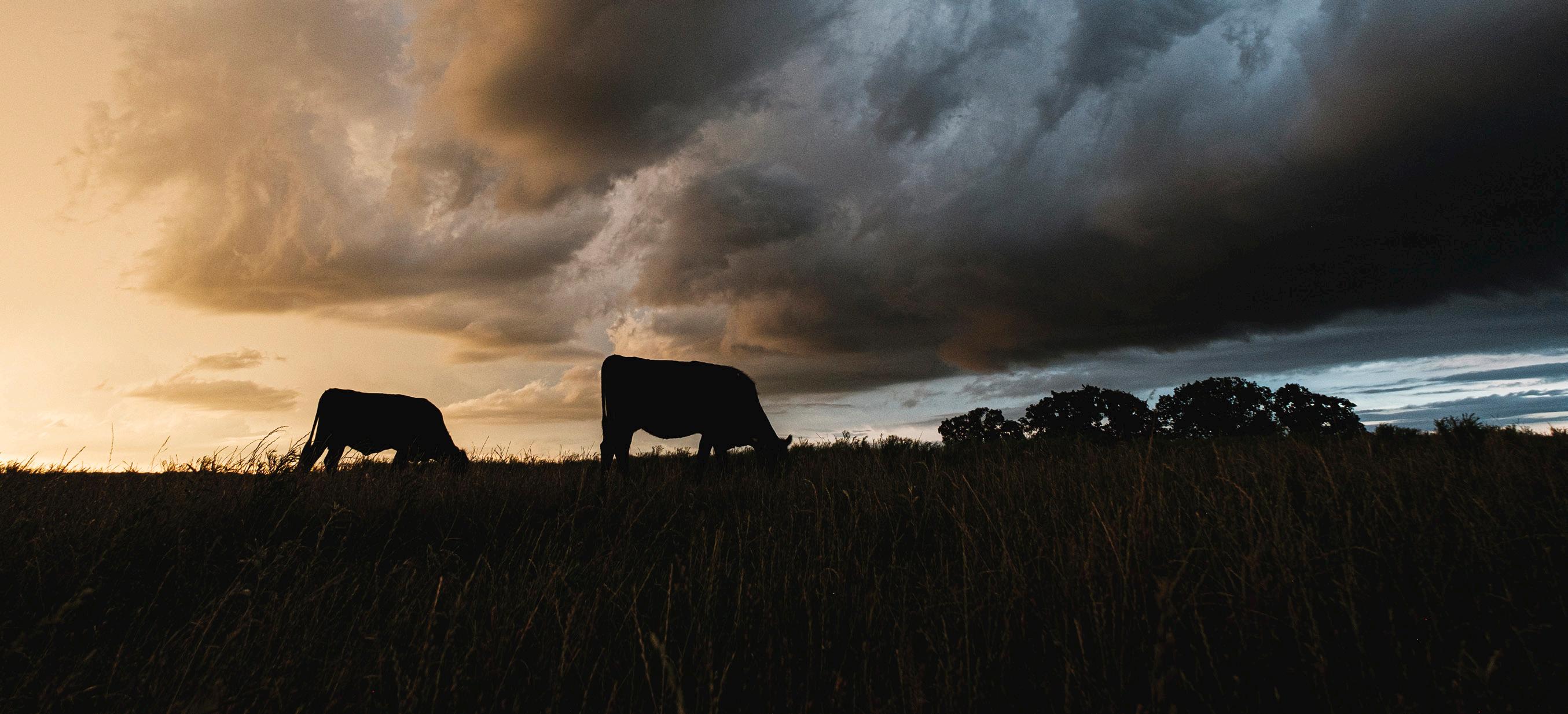
By Hannah Turner
When it comes to planning for natural disasters, there are several considerations to take into account, especially on a ranch. From family and employees to livestock, structures and equipment, protecting people and assets is imperative for families and their businesses.
Throughout the years, natural disasters have become more frequent — and more expensive. In 2024, there were 27 events nationwide with reported damages totaling more than $1 billion. Texas is unique in that it experiences virtually every type of natural disaster: thunderstorms, lightning, tornadoes, hurricanes, floods, wildfires and winter storms, each affecting ranchers in different ways.
“It is more important than ever to be prepared,” said Mary Russell, president of private client services at Higginbotham, the largest independent insurance, financial and HR services firm headquartered in Texas.
During the 2025 Cattle Raisers Convention & Expo in Fort Worth, Russell provided insight on mitigating risk and preparing ahead of a disaster, as well as how to respond when disaster strikes and how to recover to protect ranches for future generations.
The first step Russell shared in preventing damage is to identify and mitigate existing hazards before disaster strikes. This may include moving flammable materials, such as logs and fuel tanks, away from structures; fixing
loose siding and securing items that could become projectiles in high winds; grounding wire fences; and removing or fencing off single trees to prevent animals from congregating.
The next step is creating an emergency preparedness plan. Specific to the types of potential disasters, the plan should involve anyone who may be on-site in the event of an emergency. The plan should lay out how everyone will be contacted and provide direction on things such as a designated shelter location and evacuation routes for people and livestock.
In rural areas where there is often increased emergency response time, it is important to be aware of the community emergency response plan or create one if needed. As with a personal emergency preparedness plan, this document should outline how community members will be contacted as well as provide direction for recovery efforts.
In addition, ranchers should discuss with their immediate neighbors any joint efforts that can be made in the case of emergency, such as pooling resources like trailers and equipment or lending extra hands.
The last step Russell defined is working with a reliable insurance company to determine the most appropriate coverage options.
“You can do everything you can to prepare and try to mitigate and avoid risk,” she said. “When it does happen, hopefully you have insurance in place.”

To assist in disaster recovery, ranchers may benefit from taking a photo inventory of their insured property before a disaster to increase the ease of filing a claim.
When the potential for severe weather is present, ranchers should check local reports and note the level of any severe weather threats.
If a watch is issued for a weather event, those included in the emergency preparedness plan should be contacted — taking preliminary steps and preparing to enact the plan if conditions escalate. At the warning level, take action and seek shelter as needed.
A key piece of the response puzzle is the emergency backpack, Russell said. Stocked with supplies such as water, a first-aid kit and essential medication, the bag should be kept in a convenient location and contain a folder of emergency paperwork.
Considerations include emergency phone numbers — including the veterinarian, insurance provider and anyone who may be helping with evacuation efforts — a laminated copy of the emergency preparedness plan, a farm inventory and site map or aerial images. When taking shelter or heading to the field to address the emergency, keep the backpack within arm’s reach.
In early 2025, Cattle Raisers Insurance partnered with Higginbotham to deliver insurance solutions for ranchers, landowners and businesses.
Together, Cattle Raisers Insurance and Higginbotham’s farm and ranch insurance specialists provide comprehensive, affordable insurance solutions for coverage associated with land use, animal mortality, liability claims, vehicle liability and more.
Ranchers should enact their emergency plan to quickly and safely move animals to higher ground, into shelter or open gates depending on the type of weather emergency. When taking steps to ensure the safety of livestock, changes in animal behavior that can happen during severe weather should be taken into consideration.
No matter the emergency, “If your house or family is at risk, that’s the priority,” Russell reminded cattle raisers.
Once the dust settles after a catastrophe, one of the first calls ranchers should make is to their insurance provider to see what type of claims may be applicable under their policy. In the world of technology, sometimes insurance companies can even access disaster areas virtually before landowners are able to go back in, providing insight into the first steps of the recovery process.
Though the saying is, “Lightning never strikes the same place twice,” Mother Nature makes no guarantees when it comes to repeat weather events. Perhaps the most important step in recovery is to assess the effectiveness of the emergency preparedness plan, adjust and prepare for potential future emergencies. T C
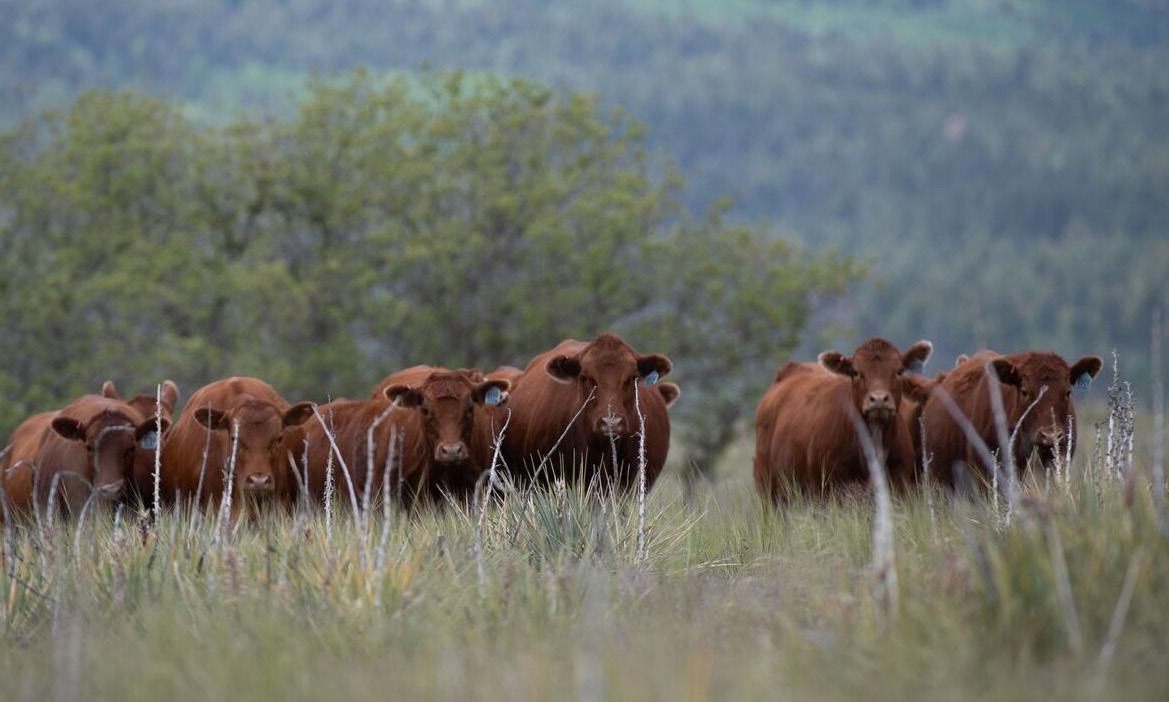
Producer survey shows management priorities when tackling liver flukes and other parasites.
In a recent survey, 120 U.S. cattle producers and veterinarians were asked the following questions about liver flukes and parasite management:
• What is your familiarity with liver flukes?
• What impact do you see liver flukes having on your operation?
• What are your current practices for parasite diagnostic testing and treatment?
Although many respondents were familiar with liver flukes, results show a gap between knowledge and active management, leaving cattle operations vulnerable to the damaging fluke.
After analyzing the survey results, Jody Wade, DVM, Boehringer Ingelheim, offered actionable insights to help cattle caretakers address liver flukes and build sustainable, well-rounded deworming protocols.
In the survey, 77% of respondents said they were familiar with liver flukes. However, awareness did not directly translate into regional knowledge. Approximately 34% of respondents indicated they didn’t know if liver flukes were a problem in their area, while another 34% believed liver flukes were “somewhat” of a problem.
Wade underscored the importance of diagnostic testing to confirm liver fluke presence in a herd, which often goes unnoticed.
“We’re finding flukes in regions we never thought they would be,” he observed. “Unless you’re taking fecal egg counts and actually looking for liver flukes as a cow-calf operator or a stocker, you’re not going to find them.”
Diagnostic testing in regions like Kansas and Tennessee has confirmed the presence of liver flukes, challenging the misconception that liver flukes are confined to the Gulf Coast or Pacific Northwest states.


Routine testing isn’t just crucial for fluke control, it’s important for sustainable management of all internal parasites. About 57% of survey respondents had never tested their herds for parasites. Out of those respondents that had tested, 52% said their last test was over a year ago.
“Not a lot of producers are routinely testing, because it can be a time burden,” Wade said. “But I still encourage producers to do it, because once we do, we have a really good snapshot of what is happening on the operation, which allows us to create the most strategic deworming plan.”
When producers send fecal samples for diagnostic testing, Wade reminds them to specify their desire for liver fluke analysis. A general diagnostic test will only look for common gastrointestinal parasites.
Gaining attention
While liver flukes rarely result in cattle death losses, understanding their underlying impact is important for cattle health and an operation’s bottom line.
“The biggest problem with flukes is their impact on production,” Wade said. Liver flukes are one of the more complex parasites in beef production. Before setting up camp in the bile ducts of the liver, juvenile flukes cause
damage in the small intestine and abdominal cavity as they travel, leaving cattle with weakened immune systems and lost growth potential.
Cattle with liver fluke infections may go months without showing clinical signs. Depending on the level of infection, cattle can experience loss of appetite, rough hair coat, decreased performance, weight loss and poor reproductive efficiency.
“The ones that really pay for it on the back end are the packers,” Wade said. “When they start harvesting cattle and find flukes, they have to condemn those livers.”
Liver condemnations can lead to significant financial losses, particularly for feedlots and processors.
The survey highlighted common deworming practices among respondents, with pour-on and injectable dewormers being the most popular application methods. However, one-third of respondents said they were unsure if their dewormers included fluke coverage.
“Right now, there are only two products in the marketplace available for effective fluke management,” Wade said. “When selecting a product for liver fluke control, it’s important to look for a product that has clorsulon or is specifically labeled for fluke coverage.”
7. Juvenile flukes migrate through the liver for 6–8 weeks before entering the bile ducts, where they mature into adults.
6. Juvenile flukes are released, then penetrate the walls of the small intestines, abdominal cavity and finally, the liver.

5. Cattle are infected when they eat vegetation or drink water containing metacercarial cysts.
4. Five to seven weeks later, offspring emerge as cercariae, then swim to vegetation and form the encysted infective stage, metacercariae.
1. Adult liver flukes produce eggs 10-12 weeks after initial infection, and those eggs are passed in the feces.
2. Exposure to water helps the larvae (miracidia) hatch (usually 2-3 weeks) and attempt to find a snail as an intermediate host.
3. The larvae (miracidia) penetrate the snail and reproduce several hundred offspring.

Wade further explained that the available products are only effective against adult parasites and do not kill juvenile flukes, which cause the most damage. But, when applied correctly, the elimination of adult flukes can disrupt the production cycle and reduce the risk of pasture reinfestation.
Understanding the life cycle of liver flukes, from egg to adult, is essential for implementing effective control measures. Unlike other internal parasites, flukes need an intermediate host to propagate. For flukes, this is a common freshwater snail. The fluke larvae migrate to snails, where they multiply. Once they exit the snail, cattle ingest them by grazing on infested grass or drinking infested water.
While it isn’t realistic to keep cattle away from areas that also attract freshwater snails, sustainable deworming practices like pasture rotation and refugia, the practice of only deworming high-risk animals, are also ways to help control liver flukes and other parasite populations.
“Effective fluking really comes down to timing,” Wade said. “In the southeastern part of the country, like in Louisiana, Alabama and Mississippi, September
is probably the best time to deworm for those liver flukes. In the Pacific Northwest, it’s a different deal. Most parasitologists will tell you to deworm between March and May, because it’s a later liver fluke season in that region.”
When asked about their interest in learning more about liver flukes, 72% of respondents said “yes.” In alignment, Wade believes education is key to closing the gap between awareness and action. “Sometimes, knowing that liver flukes may be a problem and not acting on that knowledge can be more harmful than not knowing at all,” he said.
By adopting evidence-based practices, cattle caretakers can protect their herds, improve production outcomes and reduce the hidden costs of liver flukes. If flukes have been previously found in an area, Wade recommended getting a baseline for the herd through diagnostic testing. Only then can a sustainable, strategic deworming program be built through collaboration with a herd veterinarian. T C
Story and photos courtesy of Boehringer Ingelheim.









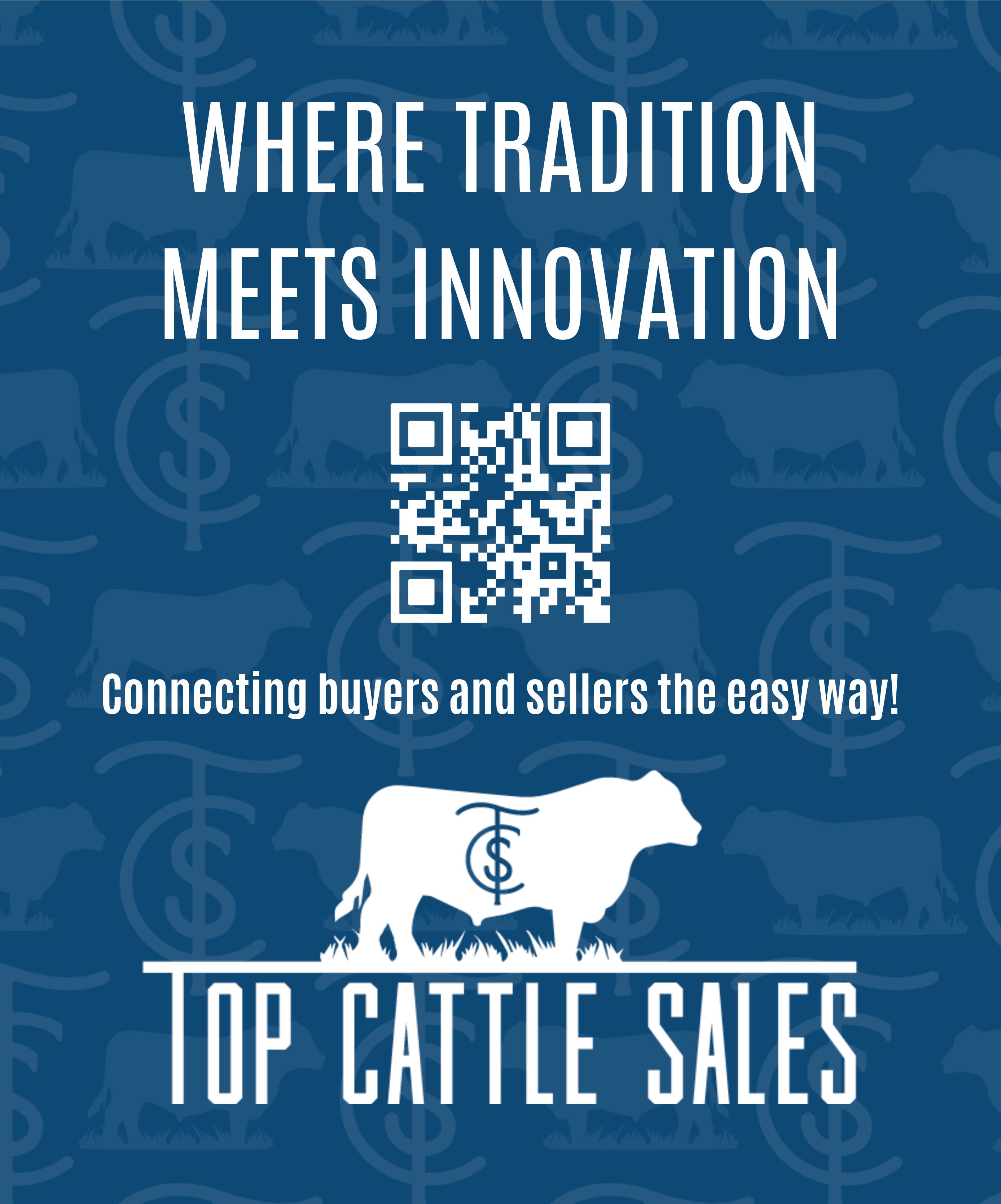

Ephedra (Ephedra antisyphilitica)
By Kent Ferguson
Alow-spreading native evergreen, Ephedra is a warm-season perennial shrub that grows in sandy to rocky soils in the southwestern U.S. It is also known as Mormon tea, clapweed, Longleaf teabush, canatilla, joint-fir and several other names.
The plant:
• Can reach 3-4 feet tall and up to 6 feet wide.
• Has green, multi-node stems that are about 3/16 of an inch wide and up to 14 inches long, appear leafless and are opposite or whorled at the nodes.
• Has small leaves that grow from the base of stiff, smooth stems. A narrow, pale orange or yellow band encircles the stem at the base of the leaves.
• Produces small red flowers in the spring that appear like a fleshy cone surrounding a nut-like, angled dark-brown seed roughly a quarter inch long.
Ephedra is valuable to grazers like white-tailed deer and domestic livestock because it is green all year and contains about 12-15% crude protein. It is consumed by many species of birds as the seeds provide a suitable food source, and the plant also offers loafing and escape cover for bob-white quail and small mammals.
Even so, the plant is often absent in pastures that have been overgrazed for many years. Ephedra is considered an indicator plant for measuring the degree of range utilization. Proper stocking and grazing management will ensure its longevity in the plant community.
Ephedra was used as a medicinal plant by early Mormon settlers and is still utilized medicinally by other countries today. However, it was banned for medical use in the U.S. after it was found to contain alkaloids that can cause life-threatening conditions. T C
Kent Ferguson, a retired rangeland management specialist from the USDA Natural Resources Conservation Service, provides plant identification photo stories to help ranchers

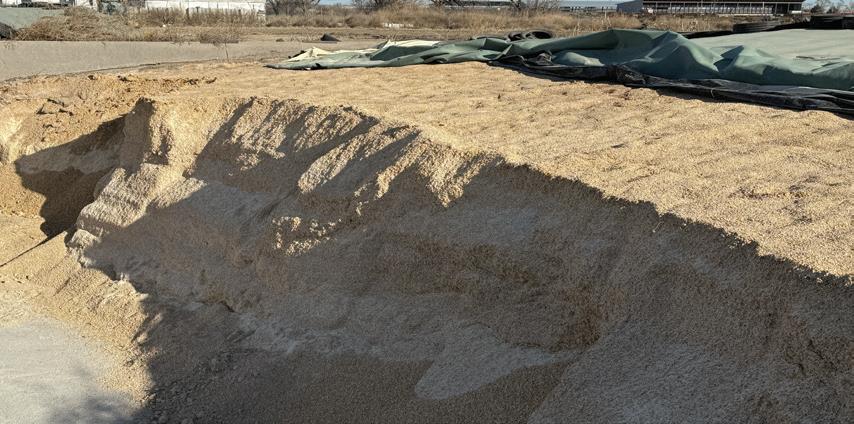
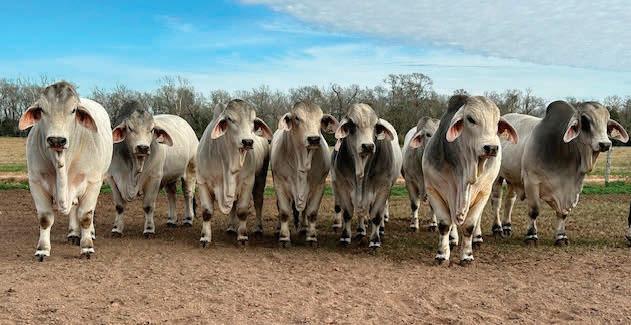





Apreventative herd health plan includes vaccination, biosecurity, proper nutrition, parasite management and understanding common routes of pathogen exposure.
Clostridial spores that cause blackleg, red water and other clostridial diseases are found in the environment. Vaccination of both calves and mature cattle is critical.
Leptospirosis can be spread by both cattle and wildlife. Vaccination is key in managing this pathogen.
Viruses that cause IBR, BVD, PI-3 and BRSV are commonly spread from animal to animal. Effective biosecurity and vaccination are important to reduce potential impacts on performance and reproduction. Biosecurity is also key to preventing trichomoniasis and vibriosis, which are spread through breeding activity. T C
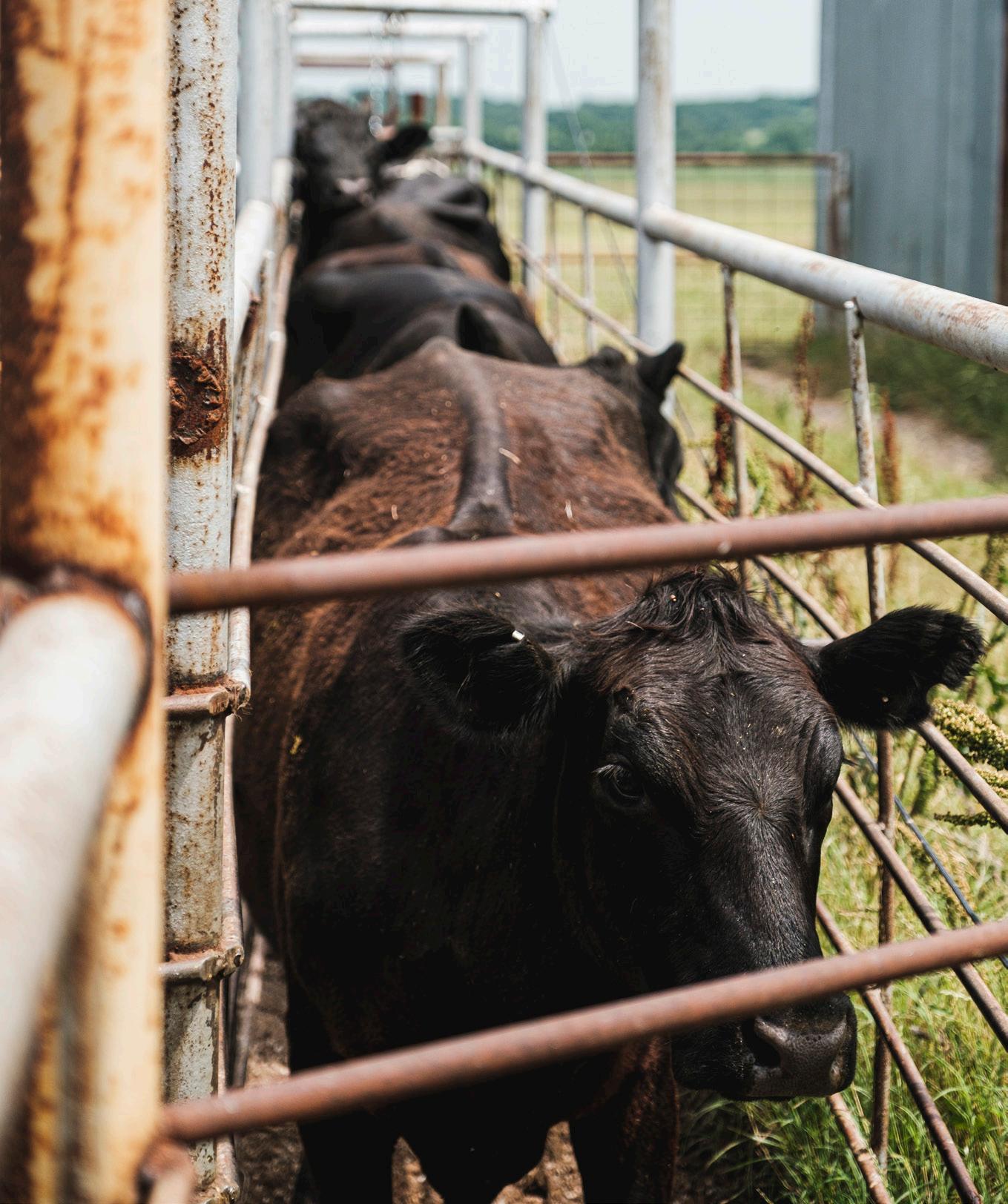

For more than half a century, TCU’s renowned Ranch Management program has given students an edge in agricultural resource success. This unique nine-month intensive program equips graduates with real-world strategies as producers and land stewards in changing times.
Space is limited. Visit ranch.tcu.edu or call 817-257-7145.
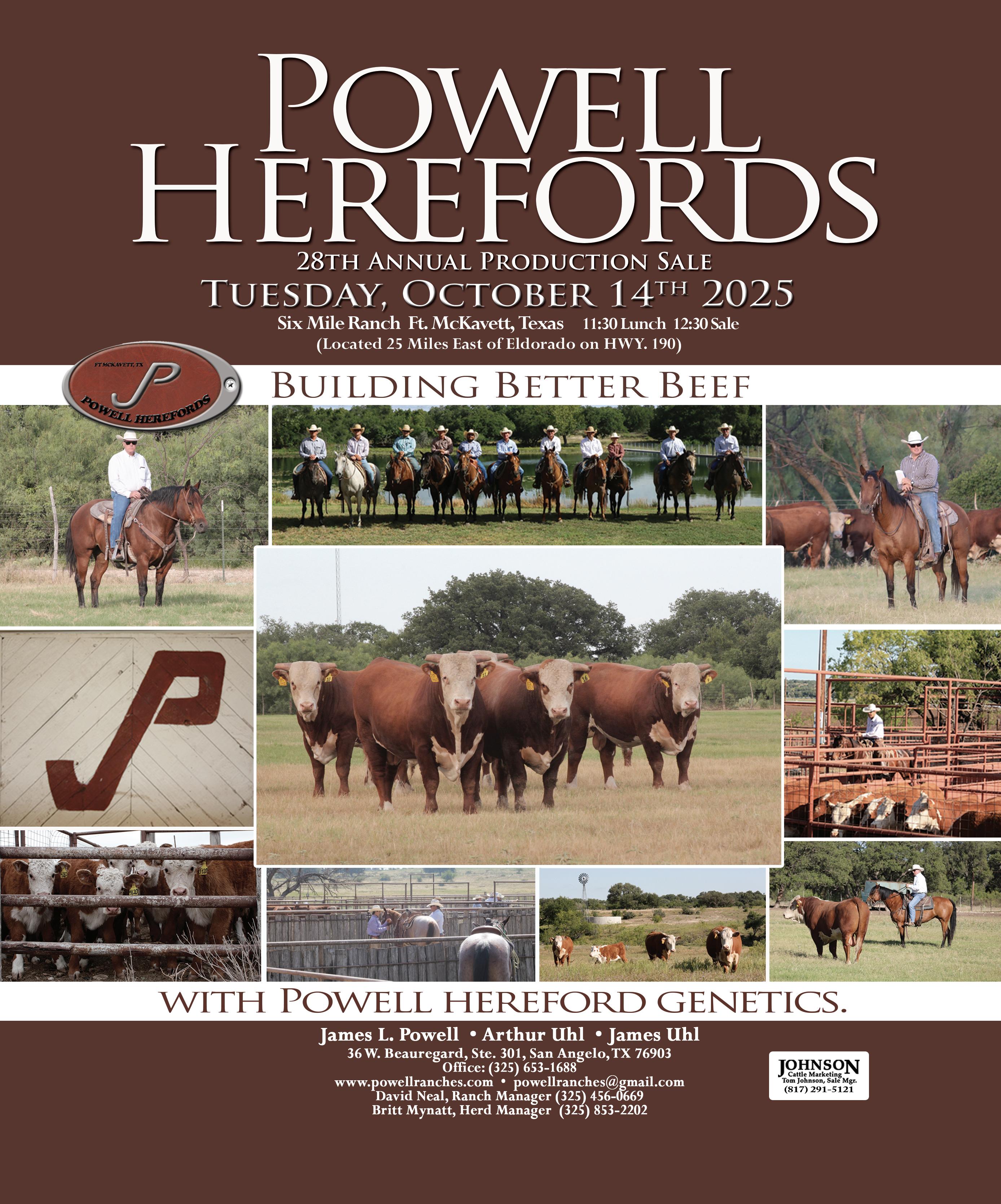
By Helen White
Texas A&M University’s College of Agriculture and Life Sciences Department of Animal Science has announced a $5 million commitment from Rozanne and Billy Rosenthal, Ashli and Todd Blumenfeld, Madolin and Ben Rosenthal, and Dr. Madelyn Rosenthal to the Meat Science and Technology Center Construction Fund.
The gift launches a fundraising campaign to support the development of the new center at Texas A&MRELLIS, a 2,400-acre applied research campus in Bryan.
“The new Meat Science and Technology Center will expand our ability to integrate research, teaching and outreach that will benefit students, industry professionals and producers who will participate in events here,” said Jeffrey W. Savell, Ph.D., vice chancellor and dean of the College of Agriculture and Life Sciences. “We will push the boundaries of discovery while continuing to train the next generation of leaders in meat science.”
With an estimated completion date in spring 2028, the 75,000-square-foot facility will feature cutting-
edge laboratories, classrooms and an innovative meat processing floor designed to provide students with hands-on learning opportunities.
“With this state-of-the-art facility, Texas A&M is further poised to become a global leader in advancing meat science research,” said G. Cliff Lamb, Ph.D., director for Texas A&M AgriLife Research. “This center will serve as a catalyst for cutting-edge research and workforce development to accelerate innovation in meat production. We will enhance our understanding of the science and drive the future of sustainable and efficient meat production.”
The building will include an auditorium and observation areas, enabling the department to offer a wide range of programs, including industry seminars and popular outreach programs like Barbecue Summer Camp, Camp Brisket, Beef 101 as well as Texas 4-H and FFA youth events.
“This innovative, high-tech center will be an unparalleled environment for transformative teaching, innovative research and impactful outreach,” said Clay Mathis, Ph.D., head of the department of animal science.

“Our faculty, staff and students will have improved resources to drive collaboration and innovation with industry in a space that further elevates our impact on agriculture and life sciences,” Mathis said.
The Rosenthal family’s longstanding support of Texas A&M University’s department of animal science dates back decades.
Manny Rosenthal, son of Standard Meat Company founder Ben H. Rosenthal, came to Texas A&M in 1938 to study meat science and business administration. As president and then chairman of the board of Standard Meat Company, Manny remained involved with the department’s meat science program and helped endow the E.M. “Manny” Rosenthal Chair, the first endowed meat sciences chair in the U.S. The current Meat Science and Technology Center at Texas A&M University was named in his honor in 1987.
William “Billy” Rosenthal followed Manny as president of Standard Meat Company and now, siblings Ben Rosenthal and Ashli Rosenthal Blumenfeld are the fourth generation to lead the company, continuing to build on their family’s legacy.
“Texas A&M has been integral to the history of Standard Meat, and this development will help ensure the future success of our business and the industry as a whole,” said Ben Rosenthal, Standard Meat Company CEO and co-president.
Ashli Rosenthal Blumenfeld, co-president, agreed. “Texas A&M is a tremendous partner to our company, providing top talent as well as training and education
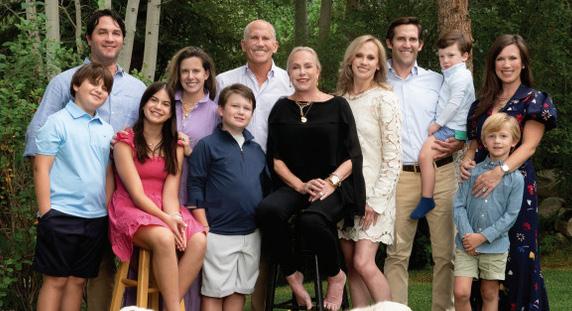
for our team and customers alike, helping us stay at the leading edge of food safety and quality advancements,” Blumenfeld said. “It’s an honor for our family to continue to support the university and the Meat Science and Technology Center.”
The university’s animal science department is the largest of its kind, and is home to one of the world’s most prestigious meat science programs.
“Texas A&M and the Rosenthal family share a rich history of collaboration in advancing meat science, and this commitment is a direct reflection of that legacy,” Savell said. “The Rosenthals have been steadfast partners in shaping the future of meat science education and research. This next phase will be the most exciting and rewarding yet.”

TSCRA Honorary Director Ken Welch built a life that honors his ranching heritage.
By Zoe Carmichael
Before his name was etched into the Texas Cowboy Hall of Fame, Ken Welch was a West Texas kid whose family followed the grass. His story isn’t built on spotlight moments, but on a lifetime of showing up, holding steady and shaping the land and people around him.
“When I was a child, my dad was mainly a rancher, and he used cutting horses to help pay for the ranch during the drought in the ’50s,” Welch says. “We moved every time the grass ran out, and that was regularly.”
While his father eventually moved into cutting horses full time, Welch’s passion stayed rooted in ranching. “He let me do more of the ranching so he could keep his interest in cutting horses,” Welch says. “I’ve known since I was a child that I wanted to be a rancher.”
For a time, that focus also included rodeo dreams. Welch says he was determined to rank among the top 14 saddle bronc riders in the Professional Rodeo Cowboys Association.
“All I wanted was a picture of me standing with the top 14,” he says. “I missed the first year but made it the second. When I got the picture, my career was basically done.”
He returned to college with only eight credit hours left to complete his accounting degree. But life had other plans. In 1974, when his father took a job with King Ranch, Welch returned to the family operation in Mulberry Canyon. What was supposed to be a one-year commitment turned into eight.
but my people handled it the same. We did everything West Texas style.”
Until 1981, Welch also worked as a cattle commodity trader — a role that gave him a unique lens not only on cattle markets, but also on people. He learned from every operation he visited, not by focusing on what went wrong, but on what went right.

A few years later, Welch and his wife, Dixie, moved to Bluffdale and later to Virginia’s Shenandoah Valley. Legendary horsewoman and family friend, Helen Groves, invited Welch to help bring her ranch back to shape. A visit meant to last days turned into a decade-long partnership that defined a larger part of his life.
“If you had come to Virginia, you’d thought you were on a ranch in Texas,” Welch says. “It didn’t look the same,
“My dad could always find something positive everywhere,” he says. “Even if the ranch was a disaster, he’d say, ‘Did you see how that garage door was fixed?’ and go home and replicate it. I carried that mindset everywhere I went.”
In recognition of his saddle bronc riding and cutting horse days, Welch was inducted into the Texas Cowboy Hall of Fame in 2009. Four years later, he was elected to the Texas & Southwestern Cattle Raisers Association board. This spring, he was elevated to honorary director.
To younger generations, Welch offers this practical advice: “The first thing you need to learn is what kind of product the public will buy.”
He adds that understanding breed selection, feed systems, range conditions and rotational grazing isn’t optional, it’s a matter of survival.
Still, for all the lessons learned and land managed, Welch reflects fondly on all the employees and ranch hands who’ve worked alongside him — not for the paycheck, but for love of the land. “When people are there because that’s where they want to be, you don’t have to inspire them,” he says. “They’re already inspired.”
Alongside Dixie and their daughters, Amy, Katy and Kelly, Welch strives to live his life with intention, loyalty and the steady hand of someone who never forgot where he came from. T C
Zoe Carmichael is a student at Oklahoma State University and summer intern through the Gilly Riojas Memorial Intern Program at Texas & Southwestern Cattle Raisers Association.


Special Replacement Female Sales
Saturday,August23@10:00a.m.–SanSaba ConsignmentsWelcome!
Saturday,September27@10:00a.m.–SanSaba ConsignmentsWelcome!
*Wednesday,October15@11:00a.m.–SanSaba 12thAnnualHillCountryYouthHeiferSale
Special Bull Sale
Thursday,October9@10:00a.m.–SanSaba FeaturingDybdalCharolaisBulls ConsignmentsWelcome!
Fall “Best of the Best” Replacement Female Sale
Saturday,October25@10:00a.m.–SanSaba Offeringqualitypair,bredcows,bredheifers,andopen orexposedheifers. Don’tmissyouropportunityto buysomeofthebestfemalesinthecountry! Thesellerandbuyerofthetop-sellingfemalesineachoftheclasses willreceiveatrophy.Allcattlewillbefiveyearsofageoryounger! ConsignmentsWelcome!
Hales Angus Farms & Cannon Charolais Bull Sale
Thursday,November6@10:00a.m.–SanSaba Angus&CharolaisBulls
WEEKLY SALES HELD AT 11:00 a.m.
Monday – Mason
Thursday – San Saba
Formoreinfoonabove salesoronlineviewing andbidding,pleasecall orvisitourwebsite.
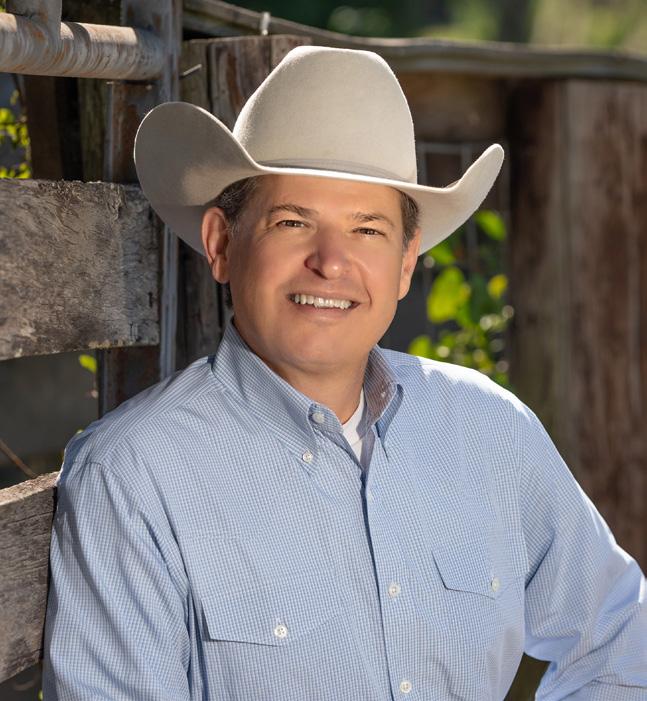
CARL RAY POLK JR.
President P.O. Box 155108 Lufkin, Texas 75915

STEPHEN DIEBEL
First Vice President 3907 Salem Rd. Victoria, Texas 77904

DAN GATTIS
Second Vice President and Secretary/Treasurer 213B W. 8th St. Georgetown, Texas 78626
James L. Powell San Angelo, 1988-1990
Tom Beard Alpine, 1994-1995
C. Coney Burgess Amarillo, 1997-1999
J. Mark McLaughlin San Angelo, 1999-2001
John E. Dudley Comanche, 2001-2003
Joe M. “Jody” Bellah, Throckmorton
Blake Birdwell, Canyon
E. S. F. “Swasey” Brainard II, Pampa
J. K. “Rooter” Brite Jr., Bowie
Donnell Brown, Throckmorton
Campbell Burgess, Amarillo
Deborah Clark, Henrietta
Lynn Cowden, Skellytown
Jake Cowen, Benjamin
J. B. Daniel, Crowell
James Henderson, Memphis
Bob McCan Victoria, 2003-2005
C.R. “Dick” Sherron, MD Beaumont, 2005-2007
Jon Means Van Horn, 2007-2009
G. Dave Scott Richmond, 2009-2011
Joe J. Parker Jr. Byers, 2011-2013
Clayton Henry, Wichita Falls
Brooks Hodges, Guthrie
Joe Leathers, Guthrie
Frank McLelland, Tahoka
Jeff Mitchell, Amarillo
Gage Moorhouse, Benjamin
Diaz W. Murray, Wichita Falls
J. Malcolm Shelton IV, Amarillo
Dale A. Smith, Amarillo
Jim Thompson, Breckenridge
Ross Thompson, Iowa Park
Wesley Welch, Lubbock
Pete Bonds Saginaw, 2013-2016
Richard Thorpe III, MD Winters, 2016-2018
Robert E. McKnight Jr. Fort Davis, 2018-2020
G. Hughes Abell Austin, 2020-2022
Arthur G. Uhl III San Antonio, 2022-2024
Kevin Busher, Winters
Charles M. “Charley” Christensen Jr., San Angelo
C.A. “Chili” Cole IV, San Angelo
Alan F. Curry, San Angelo
James H. Dudley IV, Horseshoe Bay
Amanda Dyer, Fort Davis
Johnny Ferguson, Big Lake
DA Harral, Fort Stockton
Ron Helm, Van Horn
Heath Hemphill, Coleman
Shelby W. Horn, Fredericksburg
Larry R. Horwood, Sterling City
Grant Jones, Rochelle
Mark W. Jones, Brady
W. Clay Jones, Brady
Ty Keeling, Boerne
Lorenzo Lasater, San Angelo
Brian T. McLaughlin, Midland
David L. Neal, San Angelo
Gerald Nobles Jr., Brady
James Oliver, Ozona
Wade Perks, San Angelo
Jessica Tate, Marfa
James Uhl, Fort McKavett
Cody Webb, Barnhart
C. Clark Welder, Fredricksburg
Ray W. Willoughby III, Eldorado
Ford Drummond, Pawhuska, Oklahoma
Edward Bordovsky Jr., Riviera
Austin Brown III, Beeville
W. Christopher Bush, Refugio
James Clement lll, Kingsville
David S. Crow, Corpus Christi
Dustin Dean, Floresville
David DeLaney, Kingsville
Robert “Bobby” Dobson, Birmingham, Alabama
James L. “Jamie” Donnell Jr., Fowlerton
J. David Eppright, Cost
Benjamin Eshleman III, Corpus Christi
Joseph B.C. Fitzsimons, Carrizo Springs
Robert “Robbie” Graff, D’Hanis
Parke Greeson Jr., Goliad
Bret Griffith, Del Rio
Heath Grigg, Kingsville
Marty R. Harris, Tilden
Anson Howard, San Antonio
William Whitby Jones III, Hebbronville
Leslie Kinsel, Cotulla
Claude Koontz, San Antonio
Steven J. Mafrige, Tilden
Richard Marbach, Victoria
Federico “Freddy” Nieto, Raymondville
T. Michael O’Connor, Victoria
Jason Peeler, Floresville
J.R. Ramirez, La Pryor
Michael Sasser, Corpus Christi
Lew Thompson, Pearsall
John E. Zacek, Victoria
Bill Cawley, Crockett
Wayne Cockrell, College Station
Herff Cornelius Jr., Wadsworth
Carlos Detering III, Houston
Gardner H. Dudley, Houston
Lloyd French IV, Houston
Cody Fry, College Station
Kelley Sullivan Georgiades, College Station
George Harrison, Bay City
Robert Hodgen, Houston
Colt Hoffmann, Marlin
Clay Kenley, Crockett
John Malazzo, Caldwell
Clive Runnells III, Austin
John Sumner Runnells III, Bay City
Tony Spears, Rosanky
John “Rocky” Sullivan, Galveston
Claudia Scott Wright, Richmond
April Bonds, Saginaw
Missy Bonds, Saginaw
John L. Cantrell, Cresson
Ian Chapman, Madill, Oklahoma
Hunter Crow, Dallas
James A. Dangelmayr, Muenster
Seth Denbow, Weatherford
Crawford Edwards, Fort Worth
John Greer, Henrietta
Jason Harlow, Dallas
Pete Hudgins, Sherman
Tom Johnson, Wortham
Ken Leiber, Fort Worth
Stefan Marchman, Fort Worth
William H. McCall, Fort Worth
Dan Nance, Haslet
Susan Roach, Fort Worth
Stephen S. “Steve” Sikes, Fort Worth
Bragg Smith III, Dallas
















































Texas & Southwestern Cattle Raisers Association directors represent six geographical regions across Texas and Oklahoma. Reference the special rangers page for a link to an interactive online map.



































William M. “Buck” Arrington, Pampa
Van Baize, Nocona
Bradford S. “Brad” Barnes, Fort Worth
Steve G. Beever, Pearsall
George Beggs IV, Fort Worth
Richard H. Bennett, San Antonio
Emry Birdwell, Henrietta
Mary Lou Bradley-Henderson, Childress
Chip Briscoe, Carrizo Springs
R.A. “Rob” Brown, Throckmorton
J.D. Cage, Muleshoe
Presnall Cage, Falfurrias
John W. Carpenter III, Dallas
Barrett D. Clark, Breckenridge
Martin W. Clement II, Kingsville
Thurman S. Clements Jr., Victoria
C.A. “Chip” Cole III, San Angelo
James T. Dangelmayr, Muenster
Nixon Dillard, Pleasanton
William C. “Billito” Donnell Jr., Alpine
Markham B. Dossett, Waco
Bob Drake, Davis, Oklahoma
James H. “Jim” Dudley, Comanche
Jay C. Evans, Dripping Springs
Trainor Evans, Mercedes
Leroy Ezer, Anahuac
Jim L. Gates, Pearsall
Richard Gates, Marfa
Mike Gibson, Paducah
Ronald J. “Ron” Gill, Chico
Frank Green, Liberty
W. H. “Billy” Green III, Albany
Milton S. Greeson Jr., Victoria
Thomas J. “Tommy” Haegelin, Concan
Dr. Philip C. Hardee, Beatrice, Alabama
Rafe Hargrove, Rotan
Tom J. Haynie, Navasota
Dr. Joe Pat Hemphill, Coleman
Ken Jordan, San Saba
Don Keeling, Fredericksburg
David W. Killam, Laredo
John Z. Kimberlin Jr., Dallas
Dan W. Kinsel III, Cotulla
Chris Lacy, Fort Davis
Steve C. Lewis, San Antonio
James E. “Jim” Link, Crowley
Coleman H. Locke, Hungerford
Ben Love, Marathon
Katharine Armstrong Love, Austin
Richard M. Lucas Jr., Houston
Robert B. Mansfield, Amarillo
Jon David Mayfield, Dublin
Jim McAdams, Seguin
James A. McAllen, Linn
William “Alan” McNeill, Beaumont
Len P. Mertz, San Angelo
Evalyn Moore, Richmond
Raymond E. Moore IV, Richmond
Bob Moorhouse, Weatherford
Tom Moorhouse, Benjamin
Beth Knolle Naiser, Sandia
Russell Noble, Ardmore, Oklahoma
Les Nunn, Pauls Valley, Oklahoma
Boots O’Neal, Guthrie
James Palmer, Roaring Springs
Rick Peebles, Baytown
Tim Pennell, Westhoff
Tom Perini, Buffalo Gap
Jim Peters, Quemado
Scott Petty Jr., San Antonio
Bill Phinizy, Gail
Frank Price, Sterling City
Gary Price, Blooming Grove
Mary Joe Reynolds-Montgomery, Fort Worth
Tom L. Roach III, Bozeman, Montana
Charles R. “Butch” Robinson, Navasota
Nolan Ryan, Round Rock
M. Stuart Sasser, Corpus Christi
Gordon E. Sauer, Fredericksburg
Wilson Scaling, Henrietta
Chris Scharbauer, Amarillo
Frates Seeligson Jr., San Antonio
Ed Small, Austin
Danny B. Stewart, Sterling City
Guy F. Stovall Jr., El Campo
Gerald Sullivan, Galveston
Stephen T. “Steve” Swenson, Dallas
Rick Tate, Marfa
Cliff Teinert, Albany
Richard Traylor, Batesville
Robert J. Underbrink, Houston
Tom Watson, Muleshoe
Dennis W. Webb, Barnhart
John Welch, Wolfforth
Richard Wortham, Austin
Ken Welch, Baird
Roger F. Welder, Victoria
A.B. Wharton, Vernon
W.C. “Billy” Williams, Mertzon
David W. Winters, Del Rio
Dr. M. R. “Mike” Wirtz, Brenham
Tom Woodward, Decatur
Bart Wulff, Dallas
Curtis A. Younts Jr., Belton


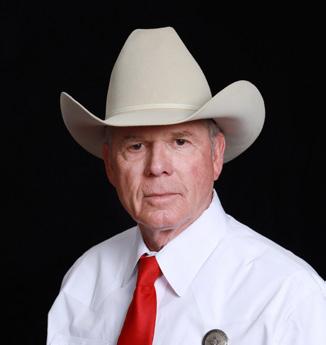




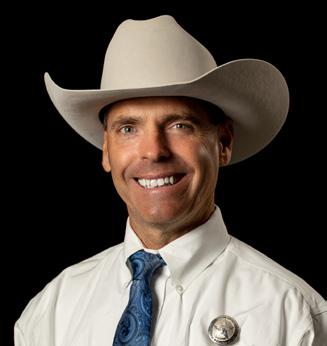


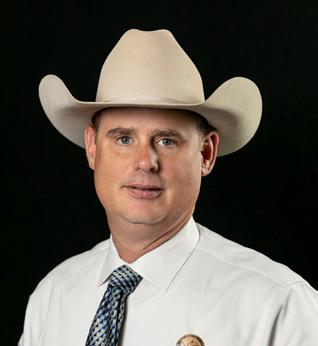







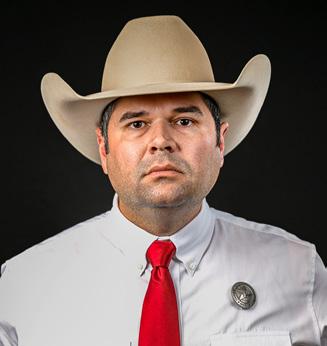









10a Interests LLC
Waller
5S Ranch
Bristow, Oklahoma
6T Cattle
Kenedy
Erin Anders Sylva, North Carolina
Bar C Ranch
Victoria
Bryan & Sandra Barnes Quanah
Ben Lively Ranch Victoria
Bent B Pipe Creek
Bennett Berend Colorado City
Birdhead Ranch LLC Durant, Oklahoma
Brendon Brown Jacksonville
CAF Cattle Co. Littlefield
Blake Evan Casamento Cicero, New York
Church Land & Cattle Fort Worth
Comfort Valley Properties Fredericksburg
Craine Ranch Poolville
Cross Country Acres Magnolia
Paige Denniston West
Gary DeViney Early
Diamond C Ranch La Porte
Patrick Doyle Fort Collins, Colorado
Edward Ebeling Johnson City
EG Ranch Zapata
First Financial Bank Clyde
Flannery Cattle Co. - JWCattle Fort Worth
Flying H Ranch Bluffton
Ron Fonke Alvin
Goodson Land & Cattle Lindale
Greg Baird Cattle Co. Perrin
H4 Cattle Taylor
Haley Hamilton Wills Point
Hawkeye Ranch Cleburne
Ansley Heifrin Bryan
Madison Holifield Winnie
Horseshoe W San Antonio
J&M McMahon FLP White Oak
Dylan Johnston East Bernard
JTJ Cattle Co. Weatherford
Judith Basin County Farms Ltd. Hobson, Montana
K1 Ranch Ben Franklin
Beth Kellermeier Miles
Dennis & Brenda Kester Stilwell, Oklahoma
Marty & Lane Kester Wagoner, Oklahoma
Kinnibrugh Farms Seymour
Margot Knoeppel Lubbock
James Kruebbe Gary Lansman Land & Cattle Co. Grapevine
Lazy L Show Cattle Navasota
Lost Coyote Ranch Athens
McClain Ranch Flatonia
Madilyn McCullough New Ulm
Moore Farms Caddo Mills
Mountain View Ranch Brackettville
Nova Acres LLC Wills Point
OOPW LLC Port Bolivar
P3 Ranch Jourdanton
Pecantree Ranch West Columbia
Bobby Perry Dime Box
Pine Ridge San Antonio
Purple Circle Magazine Canyon
Rafter Crutch LLC Quanah
Daron Randall Little Elm
Reding Ranch West Sanger
Rocking Rs Farms Springtown
Running H Ranch Cleburne
Sanderson - Neely San Antonio
Carrie Schwager Montgomery
Sikes Bar S Ranch Moran
Silver Creek Farms Loraine
Angela & Rusty Stine Liberty Hills
Stubborn A Cattle Co. Weatherford
Sulemana Farms Sullivan City
Summer Tree Ranch Alamo Heights
Mark D. Tatsch
Rocksprings
Triple M Farms Land & Cattle Church Point, Louisiana
Keith Tuch Gonzales
Gregg Turner Anahuac
Underwood/Goshen Farms Tecumseh, Oklahoma
Jacob Weisel Lake Jackson
Zeb Tindel Ranches Honey Grove

Elkhart Horse Auction
Where: Elkhart
Phone: 903-764-1495
Sale Day: Saturday
Contact: Tiffany Patterson, 903-388-7288
Atascosa Livestock Exchange
Where: Pleasanton Phone: 830-281-2516
Sale Day: Tuesday
Contact: Marvin Bendele, 210-213-5890
Four County Auction
Where: Industry Phone: 979-357-2545
Sale Day: Tuesday
Contact: Lisa Sebastian, 979-270-3041
Muleshoe Livestock Auction
Where: Muleshoe
Phone: 806-272-4201
Sale Day: Friday
Contact: Leo Aviles, 956-437-3899
Beeville Livestock Comm.
Where: Beeville
Phone: 361-358-1727
Sale Day: Friday
Contact: Daniel Keese, 361-449-7942
Clifton Livestock Comm. LLC
Where: Clifton
Phone: 254-675-7717
Sale Day: Wednesday
Contact: Larry Brown, 254-265-1920
Meridian L/S Comm. Co.
Where: Meridian
Phone: 254-435-2988
Sale Day: Monday
Contact: Larry Brown, 254-265-1920
J & J Livestock Auction
Where: Texarkana
Phone: 903-832-3576
Sale Day: Saturday
Contact: Cheri Beal, 903-280-4554
Brazos Valley Livestock Comm.
Where: Bryan
Phone: 979-778-0904
Sale Day: Tuesday
Contact: Nina Nygard, 512-281-6753
Caldwell Livestock Comm.
Where: Caldwell Phone: 979-567-4119
Sale Day: Wednesday
Contact: Mark Nygard, 512-281-6330
Lockhart Auction
Where: Lockhart
Phone: 512-398-3476
Sale Day: Thursday
Contact: Nina Nygard, 512-281-6753
Bruce Overstreet Livestock
Where: Pittsburg
Phone: 903-856-3440
Sale Day: Monday
Contact: Michelle Willeford, 903-767-0670
Tri County Livestock Market
Where: New Summerfield
Phone: 903-322-4940
Sale Day: Saturday
Contact: Jerry Boulware, 936-465-1597
Coleman Livestock Auction
Where: Coleman Phone: 325-625-4191
Sale Day: Wednesday
Contact: Dave Williams, 325-669-2030
Cattleman’s Columbus Livestock Auction
Where: Columbus
Phone: 979-732-2622
Sale Day: Wednesday
Contact: Wes Martin, 281-782-4412
Comanche Livestock Exchange
Where: Comanche
Phone: 325-356-5231
Sale Day: Saturday
Contact: Michael Davis, 254-879-3121
The New Gainesville Livestock Auction
Where: Gainesville
Phone: 940-665-4367
Sale Day: Friday
Contact: Robin Gibbs, 903-227-0791
Coryell County Comm.
Where: Gatesville Phone: 254-865-9121
Sale Day: Wednesday
Contact: Ray Davis, 254-718-5512
Cattleman’s Livestock Comm.
Where: Dalhart
Phone: 806-249-5505
Sale Day: Thursday
Contact: Clifton Miller, 806-570-7439
Hereford Livestock Auction
Where: Hereford
Phone: 806-240-3082
Sale Day: Tuesday
Contact: Joe Bob Via, 806-452-9280
Cuero Livestock Comm.
Where: Cuero Phone: 361-275-2329
Sale Day: Friday
Contact: Kaylee Malatek, 979-942-0323
Texas Cattle Exchange
Where: Eastland Phone: 254-629-2288
Sale Day: Tuesday
Contact: Ronnie Ober, 817-371-7071
Dublin Livestock Auction
Where: Dublin Phone: 254-445-1734
Sale Day: Friday
Contact: Ronnie Ober, 817-371-7071
Erath County Dairy Sale
Where: Dublin Phone: 254-968-7253
Sale Day: Friday Contact: Bob McBryde, 940-859-6217
Stephenville Cattle Co.
Where: Stephenville Phone: 254-968-4844
Sale Day: Wednesday Contact: Bob McBryde, 940-859-6217
Flatonia Livestock Comm.
Where: Flatonia Phone: 361-865-3538
Sale Day: Monday
Contact: Vance Weltner, 210-473-9099
Schulenburg Livestock Auction
Where: Schulenburg Phone: 979-743-6566
Sale Day: Saturday Contact: Vance Weltner, 210-473-9099
Floydada Livestock Sales
Where: Floydada Phone: 806-983-2153
Sale Day: Wednesday
Contact: JE Stone, 806-777-4396
Pearsall Livestock Auction
Where: Pearsall
Phone: 830-334-3653
Sale Day: Wednesday
Contact: Clarence Stevens, 210-415-0441
Gillespie Livestock Co.
Where: Fredericksburg Phone: 830-997-4394
Sale Day: Wednesday
Contact: Larry Bowden, 210-846-0380

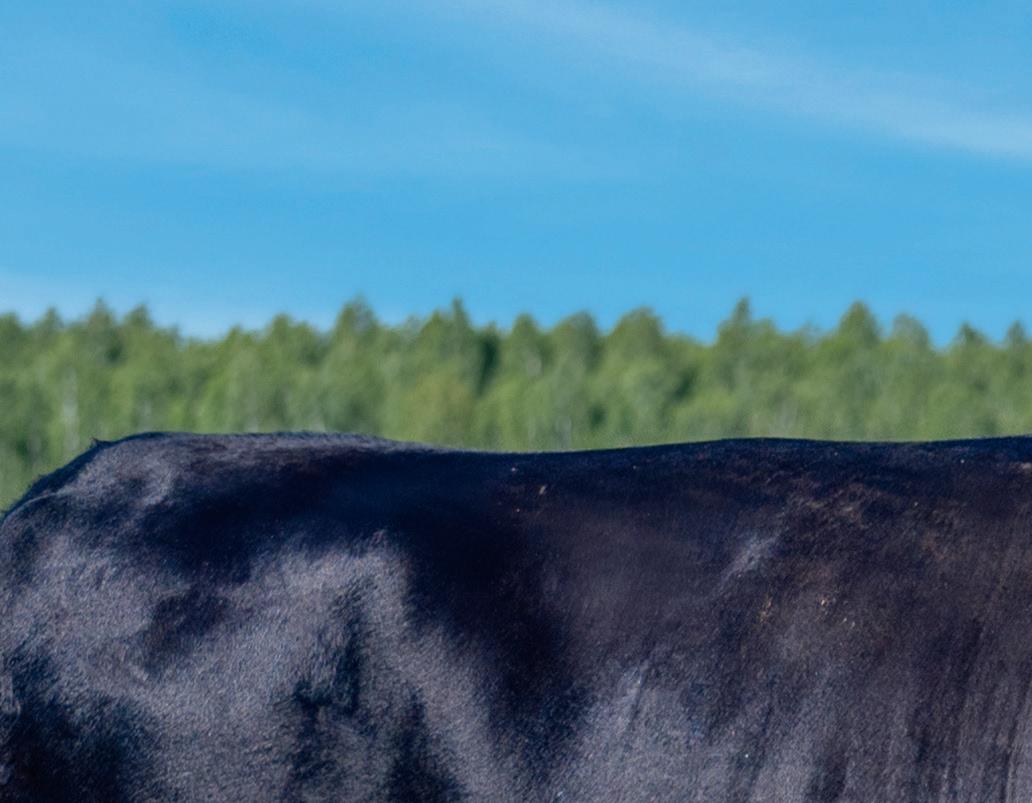





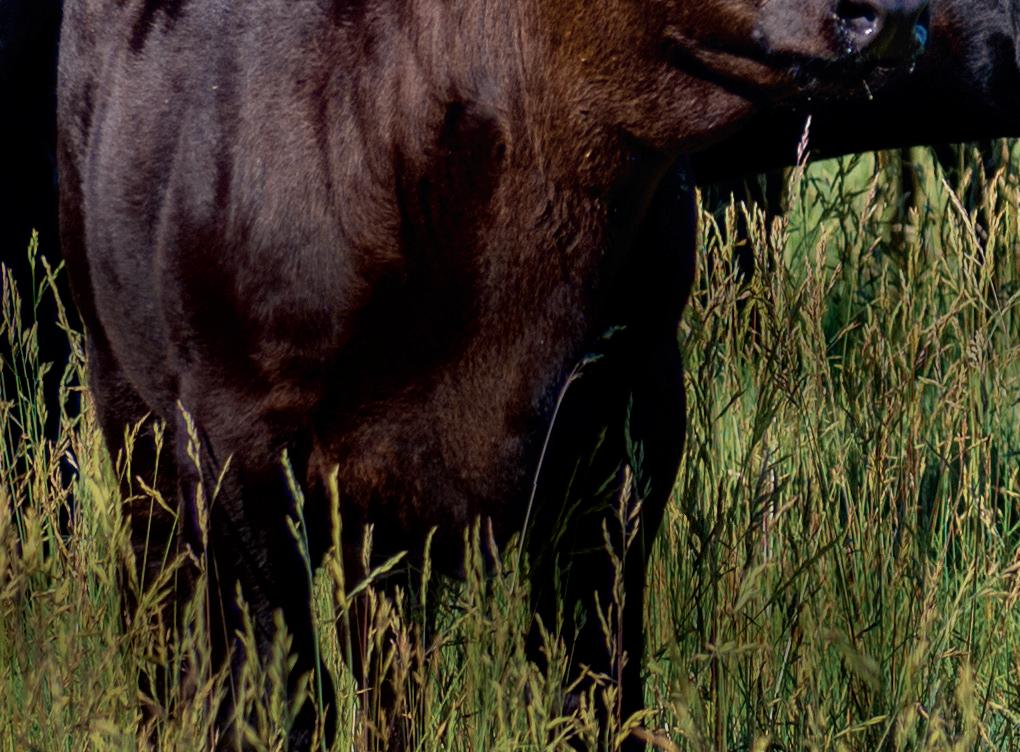








Embrace the freedom of zero payments while Purina pays the interest charge for up to 6 months during the enrollment period on select Purina® cattle, sheep and goat products with the 6-4-0 Feed Financing Program.
SIX-MONTH ENROLLMENT PERIODS: Register for the program through participating Purina® dealers.
COVERAGE: Purina will cover the interest charge for up to 6 months during the enrollment period.
The program aims to align the payment schedule with common local livestock marketing schedules.
The program is accessible nationwide through participating Purina® dealers.
The easy-to-manage program is made possible with a John Deere Financial Multi-Use Account.2 1 For up to 6 months during
Gonzales Livestock Market
Where: Gonzales
Phone: 830-672-2845
Sale Day: Saturday
Contact: JoGayle Stavena, 979-332-2186
Nixon Livestock Comm.
Where: Nixon
Phone: 830-582-1561
Sale Day: Monday
Contact: Landyn Maguglin, 361-492-9484
Longview Livestock
Where: Longview Phone: 903-235-6385
Sale Day: Thursday
Contact: Paul Pruitt, 903-725-6200
Mid-Tex Livestock Auction
Where: Anderson
Phone: 936-825-3970
Sale Day: Thursday
Contact: Rick Faught, 936-442-1039
Navasota Livestock Auction
Where: Navasota
Phone: 936-825-6545
Sale Day: Saturday
Contact: Rick Faught, 936-442-1039
Seguin Cattle Co.
Where: Seguin
Phone: 830-379-9955
Sale Day: Wednesday
Contact: Elizabeth Cortez, 830-857-1945
Hamilton Livestock Comm.
Where: Hamilton
Phone: 254-386-3185
Sale Day: Tuesday
Contact: Bob McBryde, 940-859-6217
Gore Family Auction Center
Where: Silsbee
Phone: 409-782-0612
Sale Day: Saturday
Contact: Christy McCoy, 409-782-0612
Athens Comm. Co.
Where: Athens
Phone: 903-675-3333
Sale Day: Friday
Contact: Brandy Baughman, 903-440-4382
Edinburg Livestock Auction
Where: Edinburg Phone: 956-383-5671
Sale Day: Saturday
Contact: Coney Alvarez Jr., 956-437-3899
Hubbard Livestock Market
Where: Hubbard
Phone: 254-576-2584
Sale Day: Monday
Contact: Patrick Romine, 254-723-0950
Sulphur Springs Livestock Comm.
Where: Sulphur Springs
Phone: 903-885-2455
Sale Day: Monday
Contact: Paul Pruitt, 903-725-6200
East Texas Livestock Auction
Where: Crockett
Phone: 936-544-2246
Sale Day: Tuesday
Contact: Cheyenne London, 936-222-3689
Big Spring Livestock Auction
Where: Big Spring
Phone: 432-267-5881
Sale Day: Wednesday
Contact: Bruce Brandenberger, 254-977-5763
Edna Livestock Auction
Where: Edna
Phone: 361-782-7666
Sale Day: Monday
Contact: Galynn Mazoch, 979-578-1823
Kirbyville Auction Barn
Where: Kirbyville
Phone: 409-423-2612
Sale Day: Saturday
Contact: Erica Morgan, 409-509-1946
Gulf Coast Livestock Market
Where: Alice Phone: 361-664-4395
Sale Day: Tuesday
Contact: Ramiro Garcia, 361-460-0008
Johnson County Cattle Auction
Where: Cleburne Phone: 817-556-9090
Sale Day: Saturday
Contact: Lee Snyder, 254-707-1682
Karnes City Auction
Where: Karnes City Phone: 830-780-3382
Sale Day: Wednesday
Contact: Douglas Brunet, 830-708-6537
Karnes County Livestock Exchange
Where: Kenedy Phone: 830-583-2574
Sale Day: Thursday
Contact: Elizabeth Cortez, 830-857-1945
Cattlemen’s Livestock Comm.
Where: Paris
Phone: 903-784-2238
Sale Day: Saturday
Contact: Lana Caldwell, 903-908-0530
Paris Livestock Auction
Where: Paris Phone: 903-739-2575
Sale Day: Wednesday
Contact: Robin Gibbs, 903-227-0791
Hallettsville Livestock Comm.
Where: Hallettsville Phone: 361-798-4336
Sale Day: Tuesday
Contact: Kaylee Malatek, 979-942-0323
Giddings Livestock Comm.
Where: Giddings Phone: 979-542-2274
Sale Day: Monday Contact: Nina Nygard, 512-281-6753
Lexington Livestock Comm.
Where: Lexington Phone: 979-773-2922
Sale Day: Saturday Contact: Nina Nygard, 512-281-6753
Buffalo Livestock Comm.
Where: Buffalo Phone: 903-322-4940
Sale Day: Saturday Contact: Cheyenne London, 936-222-3689
Raywood Livestock Market
Where: Raywood Phone: 936-587-4941
Sale Day: Monday Contact: Harvey Williamson, 963-334-5325
Groesbeck Auction & Livestock
Where: Groesbeck Phone: 254-729-3277
Sale Day: Thursday
Contact: Mallory Steen, 903-390-0594
Live Oak Livestock Auction
Where: Three Rivers Phone: 361-786-2553
Sale Day: Monday
Contact: Marvin Bendele, 210-213-5890
Jordan Cattle Auction
Where: Mason Phone: 325-347-6361
Sale Day: Monday
Contact: Warren Ottmers, 830-669-2262


Greystone Castle Sporting Club Mingus, TX

SCAN TO REGISTER
The 2025 Young Cattle Raisers Clay Shoot & Dinner brings together the next generation of ranchers, landowners, wildlife managers and others who are interested in the future of the great Southwest. Young professionals aged 25-40 can connect with like-minded individuals to network, learn and enjoy the clay shooting, an open bar and dinner social.


West Auction
Where: West
Phone: 254-826-3725
Sale Day: Thursday
Contact: Ray Davis, 254-718-5512
Union Comm.
Where: Hondo
Phone: 830-741-8061
Sale Day: Monday
Contact: Clarence Stevens, 210-415-0441
Milam County Livestock Auction
Where: Cameron Phone: 254-697-6697
Sale Day: Friday
Contact: Rick Faught, 936-442-1039
Nacogdoches Livestock Exchange
Where: Nacogdoches Phone: 936-564-8661
Sale Day: Thursday
Contact: Michael Witcher, 936-556-0992
Corsicana Livestock Market
Where: Corsicana
Phone: 903-872-1631
Sale Day: Tuesday
Contact: Katy Webb, 903-388-4390
Carthage Livestock Auction LLC
Where: Carthage
Phone: 903-693-6361
Sale Day: Tuesday
Contact: Lori Blankenship, 936-234-3441
Livingston Livestock Exchange
Where: Livingston Phone: 936-327-4917
Sale Day: Saturday
Contact: Harvey Williamson, 963-334-5325
Lonestar Stockyards
Where: Amarillo
Phone: 806-677-0777
Sale Day: Tuesday
Contact: Gary McClellan, 806-334-0517
Emory Livestock Auction
Where: Emory
Phone: 903-473-2512
Sale Days: Tuesday & Saturday
Contact: Brandy Baughman, 903-440-4382
Calvert Livestock Co.
Where: Calvert
Phone: 979-364-2829
Sale Day: Friday
Contact: Ray Davis, 254-718-5512
Hunt Livestock Exchange
Where: Henderson
Phone: 903-657-2690
Sale Day: Monday
Contact: Samuel Steadman, 318-617-1141
Jordan Cattle Auction
Where: San Saba
Phone: 325-372-5159
Sale Day: Thursday
Contact: David Munden, 325-456-7253
Center Auction Co.
Where: Center
Phone: 936-598-4395
Sale Day: Wednesday
Contact: Michael Witcher, 936-556-0992
Triple G Livestock Auction LLC
Where: Rio Grande City
Phone: 956-437-1988
Sale Day: Friday
Contact: Coney Alvarez Jr., 956-437-3899
Tulia Livestock Auction
Where: Tulia Phone: 806-995-4184
Sale Day: Thursday
Contact: Tommy Thompson, 806-690-4080
Abilene Auction
Where: Abilene Phone: 325-673-7865
Sale Day: Tuesday
Contact: Dave Williams, 325-669-2030
Stone Livestock Comm.
Where: Mt. Pleasant
Phone: 903-575-9099
Sale Day: Tuesday
Contact: Paul Pruitt, 903-725-6200
Producers Livestock Auction
Where: San Angelo
Phone: 325-653-3371
Sale Day: Thursday
Contact: Bruce Halfmann, 325-315-5972
Southwest Livestock Exchange
Where: Uvalde
Phone: 830-278-5621
Sale Day: Thursday
Contact: Clarence Stevens, 210-415-0441
Mort Livestock Exchange
Where: Canton Phone: 903-287-6386
Sale Day: Special Sales Only
Contact: Paul Pruitt, 903-725-6200
Brenham Livestock Auction
Where: Brenham
Phone: 979-836-3621
Sale Day: Friday
Contact: Lisa Sebastian, 979-270-3041
El Campo Livestock Exchange LLC
Where: El Campo
Phone: 979-543-2703
Sale Day: Tuesday
Contact: Galynn Mazoch, 979-578-1823
Wharton Livestock Auction
Where: Wharton
Phone: 979-532-3660
Sale Day: Wednesday
Contact: Megan Stavena, 979-320-4228
Wichita Livestock Sales
Where: Wichita Falls Phone: 940-541-2222
Sale Day: Wednesday Contact: R.C. Langford, 832-330-7279
Decatur Livestock Market
Where: Decatur Phone: 940-627-5599
Sale Day: Monday
Contact: Rebecca Benson, 940-389-6382
Winnsboro Livestock Auction
Where: Winnsboro Phone: 903-365-2201
Sale Day: Friday
Contact: Alan Pruitt, 903-725-6200
Graham Livestock Comm. LLC
Where: Graham Phone: 940-549-0078
Sale Day: Monday
Contact: Kyla Rater, 940-284-9968



















11707 FM 2868 Flint, TX 75762 Mike: 903-520-0390 mbpga@aol.com Carla: 903-530-8551 wtnca@aol.com


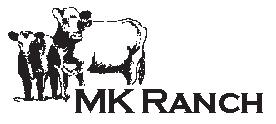




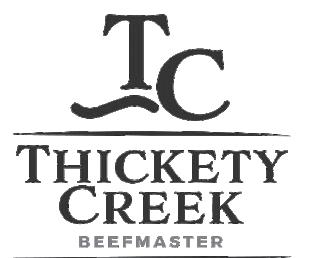








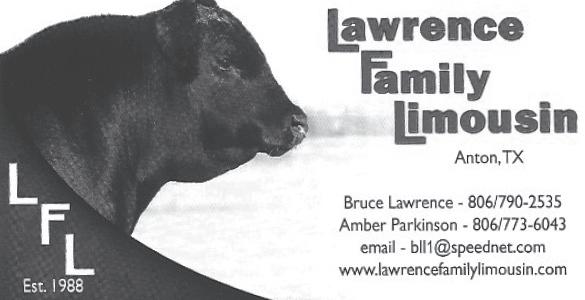







Polled Herefords



“Registered Herefords Since 1938” Email: john@dudleybros.com

John 325-642-0745 Tom 325-642-0748 Comanche, Texas; Ph 325-356-2284
Lee & Jacqui Haygood

923 Hillside Ave. Canadian, TX 79014 806-323-2906 lee@indianmoundranch.com www.indianmoundranch.com

J .T . E chols DVM P.O. Box 709 • Breckenridge, TX 76424 Of: (254) 559-9739 • Cell: (254) 559-0156 muleshoeranch@gmail.com
“Quality Registered Herefords” Est.1921 – Bulls for sale at all times out of good milking cows
Office: 512-446-6200 Cell: 979-218-0065






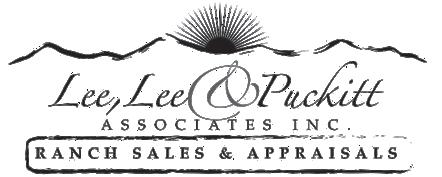
















A passion for raising cattle starts early. And so should the protection. Treat your pastures with Corteva Agriscience™ herbicides to knock down weeds and brush so your cattle can graze healthier and happier. It’s better for your herd, better for the land and better for your business. And by creating more sustainable acres, you’ll be protecting your passion for this work for generations to come. Find the latest innovations to help you at RangeAndPasture.com .
FRIDAY, AUG. 1
TSCRA Ranch Gathering Where: Beaumont When: 5:30 p.m.
MONDAY, AUG. 4 -
WEDNESDAY, AUG. 6
71st Annual Texas A&M Beef Cattle Short Course Where: College Station
WEDNESDAY, AUG. 13
TSCRA Ranch Gathering Where: Crockett When: 5:30 p.m.
TUESDAY, AUG. 19
Ranching 101: Proof in the ProfitsDeveloping Weaning Protocols Where: Online When: 1 p.m.
WEDNESDAY, AUG. 20
TSCRA Ranch Gathering Where: Navasota When: 5:30 p.m.
SATURDAY, AUG. 23
Special Replacement Female Sale Where: Jordan Cattle Auction, San Saba When: 10 a.m.
TUESDAY, AUG. 26
TSCRA Ranch Gathering Where: Midland When: 5:30 p.m.
THURSDAY, AUG. 28
TSCRA Ranch Gathering Where: El Campo When: 5:30 p.m.
MONDAY, SEPT. 1
TSCRA Spring Internship Applications Open
WEDNESDAY, SEPT. 3
TSCRA Ranch Gathering Where: Sulphur Springs When: 5:30 p.m.
TUESDAY, SEPT. 9
TSCRA Ranch Gathering Where: Comanche When: 5:30 p.m.
THURSDAY, SEPT. 11
Wichita Falls Luncheon Where: McBride’s Steakhouse, Wichita Falls When: 11:30 a.m.
THURSDAY, SEPT. 11SUNDAY, SEPT. 21
Oklahoma State Fair Where: Oklahoma City
SATURDAY, SEPT. 13
Young Cattle Raisers Clay Shoot & Dinner Where: Greystone Castle Shooting Club, Mingus
TUESDAY, SEPT. 16
Ranching 101: Selecting Your Next Herd Sire Where: Online When: 1 p.m.
THURSDAY, SEPT. 18
TSCRA Ranch Gathering Where: Cameron When: 5:30 p.m.
TUESDAY, SEPT. 23
TSCRA Ranch Gathering Where: Waco When: 5:30 p.m.
FRIDAY, SEPT. 26SUNDAY, OCT. 19
State Fair of Texas Where: Dallas
SATURDAY, SEPT. 27
Replacement Female Sale
Where: Jordan Cattle Auction, San Saba When: 10 a.m.
MONDAY, SEPT. 29
Gardiner Angus Ranch: 21st Annual Fall Production Sale Where: Ashland, Kansas
THURSDAY, OCT. 2
Dudley Bros: 64th Annual Bull Sale Where: Comanche
TUESDAY, OCT. 7WEDNESDAY, OCT. 8
R.A. Brown Ranch: Bull, Female & Quarter Horse Sales Where: Throckmorton
THURSDAY, OCT. 9
Special Bull Sale
Where: Jordan Cattle Auction, San Saba When: 10 a.m.
GKB Cattle: Annual Fall Bull Sale Where: Desdemona When: 12 p.m.
SUNDAY, OCT. 12TUESDAY, OCT. 14
Texas Cattle Feeders Assoc. Annual Convention Where: Fort Worth
TUESDAY, OCT. 14
Powell Ranch Herefords: 28th Annual Production Sale Where: Fort McKavett When: 12:30 p.m.
TSCRA Ranch Gathering Where: San Angelo When: 5:30 p.m.
WEDNESDAY, OCT. 15
12th Annual Hill Country Youth Heifer Sale Where: Jordan Cattle Auction, San Saba When: 11 a.m.
THURSDAY, OCT. 16
TSCRA Ranch Gathering Where: Fredericksburg When: 5:30 p.m.
MONDAY, OCT. 20
TSCRA Ranch Gathering Where: Buffalo Gap When: 5:30 p.m.
TUESDAY, OCT. 21
Ranching 101: Disease DefenseRecognizing and Treating Common Illnesses Where: Online When: 1 p.m.
FRIDAY, OCT. 24
Case Ranch: Consigning Cattle to STHA Sale Where: Beeville
SATURDAY, OCT. 25
44 Farms: Fall Bull Sale Where: Cameron When: 10 a.m.
Fall “Best of the Best” Replacement Female Sale Where: Jordan Cattle Auction, San Saba When: 10 a.m.
WEDNESDAY, OCT. 29
TSCRA Ranch Gathering Where: Leonard When: 5:30 p.m.







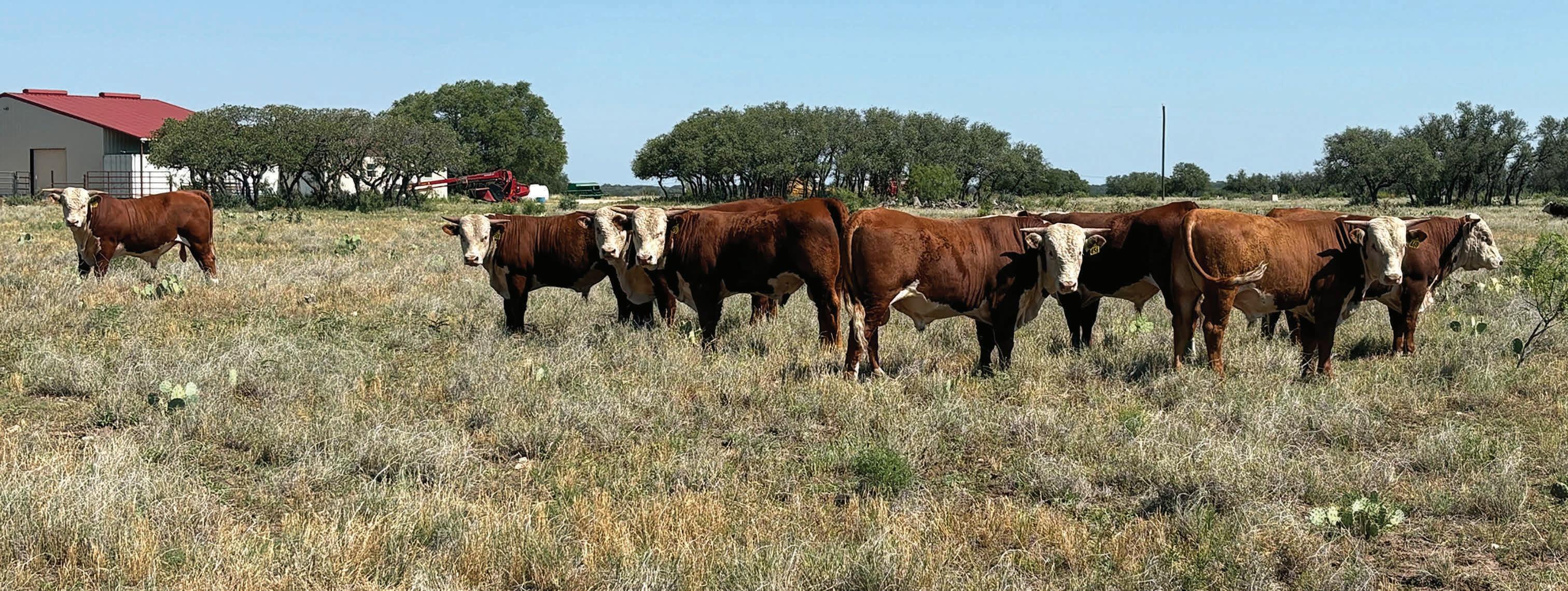

A mid-year look at livestock market reports showed a rise in cattle numbers.
On July 8, 1925, receipts at the 20 largest markets for the year accounted for 6,371,000 head of cattle. That was up about 10,000 head from the year prior.
The author reminded readers of the importance of protecting the financial stability of cattle ranchers: “Furthermore, if you want to eat good beef, it will be necessary to grant the cattle producer an income that will at least give him as satisfactory a living as the bank clerk or railway brakeman in town.”
Pictured on the cover was Eugene Carroll, the five-year-old son of Mr. and Mrs. W.T. Carroll, of Fairfax, Oklahoma. T C
“Several years ago I made the switch to Nelson Tetraploid Ryegrass from Gulf ryegrass. NO WAY I’m going back to Gulf... Nelson increases forage production and extends grazing days. With Nelson, the ranch is producing more Beef, and that means more dollars to our bottom line ... with only a little extra seed cost. The extra production from this switch to Nelson really helps to reduce our costs. (fertilizer and fuel costs)
I’m staying with Nelson Ryegrass! NO WAY I’m going back... My cattle like it... and so do I!”

Carlos Bonnot - DVM
Bonnot Ranch • La Ward, Texas




